
About UsThe Numismatic Bibliomania Society is a non-profit association devoted to the study and enjoyment of numismatic literature. For more information please see our web site at coinbooks.org SubscriptionsThose wishing to become new E-Sylum subscribers (or wishing to Unsubscribe) can go to the following web page link MembershipThere is a membership application available on the web site Membership Application To join, print the application and return it with your check to the address printed on the application. Print/Digital membership is $40 to addresses in the U.S., and $60 elsewhere. A digital-only membership is available for $25. For those without web access, write to: Charles Heck, Treasurer
AsylumFor Asylum mailing address changes and other membership questions, contact Terry at this email address: terrywhite5475@yahoo.com SubmissionsTo submit items for publication in The E-Sylum, write to the Editor at this address: whomren@gmail.com BUY THE BOOK BEFORE THE COIN |
- WAYNE'S WORDS: THE E-SYLUM APRIL 14, 2019
- KOLBE & FANNING SALE 152 HIGHLIGHTS
- 2019 IAPN BOOK PRIZE NOMINATIONS
- MORE ON THE IMPERIAL COINS OF ANNAM BOOK
- NEW BOOK: MEDALS OF AVIATION 1783-1945
- NEW BOOK: VICTORIA CROSS BIBLIOGRAPHY, 2ND ED.
- NEW BOOK: WORLD PAPER MONEY MODERN ISSUES 25TH
- NEW BOOK: NORWEGIAN PAPER MONEY 1695-2017
- PERIODICAL: SCRIPOPHILY APRIL 2019 PUBLISHED
- U.S. MINT NEWSLETTERS ON NEWMAN PORTAL
- VIDEO: CLYDE HUBBARD AND FRIENDS
- MORE ON THE MYSTERY WB WREATH-WREATH MEDAL
- NOTES FROM E-SYLUM READERS: APRIL 14, 2019
- VIVA CLYDE HUBBARD!
- LINDBERGH'S AVIATION MEDALS
- CAMBODIA NUMISMATIC MUSEUM OPENS
- VOCABULARY TERMS: HANDCUT, HAND ENGRAVING
- PIERRE FLANDIN (1778-1863)
- DEL BLAND MEMORIAL EVENT AT 2019 EAC SHOW
- YOUNG COLLECTOR CHRISTIAN HARTCH PROFILED
- F+W MEDIA MAY LAY OFF 66 AT KRAUSE PUBLICATIONS
- SMITHSONIAN: MONEY AND THE MILITARY
- NUMISMATIC NUGGETS: APRIL 14, 2019
- WAYNE'S NUMISMATIC DIARY: APRIL 14, 2019
- WACHT AND HIS FIVE MINUTES WORK TOKEN
- JEFF BURKE'S SAINT-GAUDENS DOUBLE EAGLE QUEST
- MEDALS OF THE JACOBITE REBELLION
- WEST VIRGINIA'S UNCLAIMED CIVIL WAR MEDALS
- GIANT PCGS CURRENCY SHIPWRECK NOTE SLABS
- LOOSE CHANGE: APRIL 14, 2019
Click here to access the complete archive a
Click here to unsubscribe (scroll down)
To comment or submit articles, reply to whomren@gmail.com
Content presented in The E-Sylum is not necessarily researched or independently fact-checked, and views expressed do not necessarily represent those of the Numismatic Bibliomania Society.
WAYNE'S WORDS: THE E-SYLUM APRIL 14, 2019
 New subscribers this week include: George Stand, and the following members of Sociedad Numismática de Monterrey, courtesy of Adrián
González-Salinas: Raúl Martínez, Raúl I. Montalvo, Héctor Elizondo, Luis Flores, Hugo Garza, Pedro Cárdenas, Juan José de
los Santos, and Salvador Arteaga-Garza. Welcome aboard! We now have 5,928 subscribers.
New subscribers this week include: George Stand, and the following members of Sociedad Numismática de Monterrey, courtesy of Adrián
González-Salinas: Raúl Martínez, Raúl I. Montalvo, Héctor Elizondo, Luis Flores, Hugo Garza, Pedro Cárdenas, Juan José de
los Santos, and Salvador Arteaga-Garza. Welcome aboard! We now have 5,928 subscribers.
Thank you for reading The E-Sylum. If you enjoy it, please send me the email addresses of friends you think may enjoy it as well and I'll send them a subscription (but let me know if they are located in the European Union). Contact me at whomren@gmail.com anytime regarding your subscription, or questions, comments or suggestions about our content.
As John Lupia reminded me, today is the 154th anniversary of Lincoln's assassination. This week we open with highlights from Kolbe & Fanning's 152nd sale, five new books, a new periodical issue, and newsletters from the U.S. Mint.
Other topics this week include Lindbergh's aviation medals, Cambodia's numismatic museum, 19th century collector Pierre Flandin, Del Bland, Clyde Hubbard, Christian Hartch, the 1923-D double eagle, and West Virginia's unclaimed Civil War medals.
To learn more about the Association of Banks for the Suppression of Counterfeiting, the 2019 IAPN book prize nominations, Norwegian paper money, Wright & Bale, fichas de hacienda, Chinese coin swords, hard rubber toilet brush tokens, Judo medals, and baseball schedule tokens, read on. Have a great week, everyone!
Wayne Homren
Editor, The E-Sylum
KOLBE & FANNING SALE 152 HIGHLIGHTS
Kolbe & Fanning's next numismatic literature sale will close April 27, 2019. The firm provided these highlights. Great material here! -Editor
 On April 27, Kolbe & Fanning Numismatic Booksellers will be holding our 152nd sale, featuring selections from the libraries of Doug Robins,
Philip J. Carrigan and John P. Donoghue, with additional offerings from the libraries of Reed Hawn, Del Bland and Q. David Bowers. The 441-lot sale is devoted
to North American numismatics, and will be of particular interest to collectors of Canadian coins, medals, tokens and paper money. It should be noted, however,
that a number of important American catalogues offering ancient and foreign coins are also included.
On April 27, Kolbe & Fanning Numismatic Booksellers will be holding our 152nd sale, featuring selections from the libraries of Doug Robins,
Philip J. Carrigan and John P. Donoghue, with additional offerings from the libraries of Reed Hawn, Del Bland and Q. David Bowers. The 441-lot sale is devoted
to North American numismatics, and will be of particular interest to collectors of Canadian coins, medals, tokens and paper money. It should be noted, however,
that a number of important American catalogues offering ancient and foreign coins are also included.
Some highlights of the sale include:

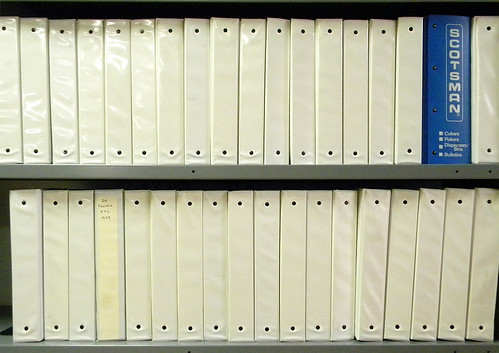
Lot 48: Del Bland's archive of large cent collection inventories and correspondence
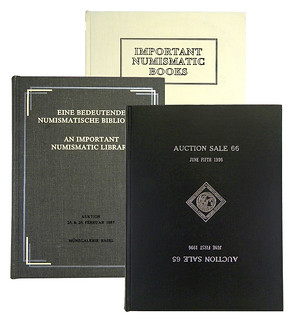

Lots 235 and 115
Lot 235: a complete set of hardcover George F. Kolbe numismatic literature catalogues
Lot 115: a well-preserved copy of Henry Chapman's catalogue of the George M. Parsons sale, with photographic plates, part of a consignment from legendary collector Reed Hawn featuring nearly every large-format plated Chapman catalogue

Lot 206: the first edition of Laban Heath's American Bond Detector

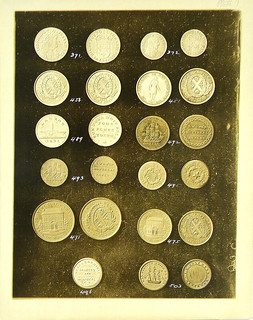
Lots 164 and 326
Lot 164: Allison W. Jackman's plated copy of Tom Elder's 1908 Gschwend catalogue
Lot 326: the second-day variant of the first W.W.C. Wilson sale, with seven original photographic plate


Lots 172 and 33
Lot 172: an exceptional plated copy of Felt's 1839 Historical Account of Massachusetts Currency
Lot 33: the first seven Annual Reports of the Association of Banks for the Suppression of Counterfeiting


Lots 252 and 310
Lot 252: Lawrence Lande's limited edition works on John Law and his monetary system
Lot 310: a unique archive of material relating to the foundation of the Numismatic Literary Guild, including early volumes of the NLG Newsletter
The printed catalogue of Sale 152 was mailed to active customers. A PDF of the printed catalogue has been posted to our main website at numislit.com for those who prefer that format. Bids placed via post, email, fax or phone must be received by Friday, April 26, the day before the sale, in order for them to be processed. Advance absentee bids may also be placed at any time online at bid.numislit.com; live internet bidding will be available during the sale itself through the same platform.
Kolbe & Fanning Numismatic Booksellers LLC is a licensed and bonded auction firm in the State of Ohio. For more information, please see the Kolbe & Fanning website at numislit.com or email David Fanning at df@numislit.com.
Register early to bid online
Bids may be placed via post, email, fax or phone, as well as online. Kolbe & Fanning is using Auction Mobility as our third-party online bidding platform.
Auction Mobility is an app-based platform allowing users the ability to participate in the sale through phones, tablets and computers. To register for the
sale, bidders must go to bid.numislit.com and sign up. Once you have set up an account, you may browse lots, place
advance bids, or participate in the live sale online. Those wishing to participate on their devices can download the new Kolbe & Fanning app through the
Apple or Google Play Store.
To read the earlier E-Sylum article, see:
KOLBE & FANNING SALE 152 ANNOUNCED (https://www.coinbooks.org/v22/esylum_v22n13a03.html)

2019 IAPN BOOK PRIZE NOMINATIONS
Peter Preston-Morley of Dix Noonan Webb in London submitted this information about the 2019 IAPN book prize awarded by the International Association Professional Numismatists. Thank you. -Editor
Peter writes:
This year there are 20 titles for consideration, and I attach a full list of them, including details of ordering information.
The Prize, which is worth Sw Fr 1,000, is awarded annually to the book voted by members of the IAPN as the most deserving, not necessarily from a commercial standpoint. Voting takes place at the IAPN's General Assembly, which this year will be held in Carefree, AZ, on Wednesday May 15th. The Prize was first awarded in 1982, when it was won by the late Dr Martin Price. Since then other winners have included Philip Grierson, Mark Blackburn, Robert van Arsdell, Robert Friedberg, Sabine Bourgey, David Vagi, Harrington Manville, Christian Dekesel, Sylvia Hurter, Italo Vecchi, Hugo Vanhoudt and, last year, the British scholar Paul Stevens.

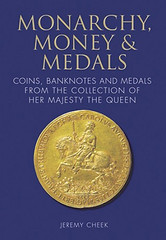
CALLAWAY, Jonathan and MURPHY, Dave. Paper Money of Scotland. The definitive guide to the paper money issues of Scotland from 1695 to the present
day. 2 vols.
Pam West, Sutton, England, 2018.
ISBN 978-0-9543457-6-1, 978-0-9543457-7-8
Price: GBP 50. Order from www.britishnotes.co.uk or from www.spink.com
CHEEK, Jeremy. Monarchy, Money & Medals: Coins, Banknotes and Medals from the Collection of Her Majesty the Queen.
Spink, London, 2018.
ISBN 978-1-907427-91-6
Price: GBP 40. Order from www.spink.com

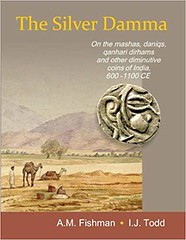
DANNREUTHER, John W. United States Proof Coins. Volume IV: Gold. 2 vols, casebound.
John W. Dannreuther Publishing, Fullerton, USA, 2018.
ISBN 978-0-9998968-0-8
Price: US $250. Order from www.orcararities.com or www.numislit.com
FISHMAN, A.M., and TODD, I.J., The Silver Damma. On the mashas, daniqs, qanhari dirhams and other diminutive coins of India, 600-1100 CE.
IIRNS Publications, Mumbai, India, 2018.
ISBN 978-81-938291-0-3
Price: US $107.95. Order from www.amazon.com


GATT, John A. Coins Minted by the Knights in Malta. A comprehensive catalogue 1530 to 1798.
John Gatt, Melbourne, Australia, 2018.
ISBN 978-0-646-98799-6
Price: €200. Order from jagatt@gmail.com; or US $220 from www.numislit.com Promotion: www.coinsofmalta.com/knights-of-malta-coins/coins-minted-by-
the-knights-in-malta/
JANKOWSKI, Lyce. Les Amis des monnaies. La sociabilité savant des collectionneurs et numismates chinois de la fin des Qing.
Maisonneuve & Larose, Paris, 2018.
ISBN 978-2-37701-030-1
Price: €30. Order from www.hemisphereseditions.fr


KOGON, Aaron J., and FONTANILLE, Jean-Philippe. The Coinage of Herod Antipas. A Study and Die Classification of the Earliest Coins of Galilee.
Koninklijke Brill, Leiden, Netherlands, 2018.
ISBN 978-90-04-35961-1
Price: €102. Order from www.brill.com; or GBP 90 from www.amazon.com
KUNZMANN, Ruedi and WEISENSTEIN, Karl. Das Zürcher Probierbuch. Das Zürcher Probierbuch der Familie Stampfer dokumentiert Münzproben der
Stadt von 1549 bis 1680.
Battenberg Verlag, Regenstauf, Germany, 2018.
ISBN 978-3-86646-164-2
Price: €85. Order from www.battenberg-gietl.de


LANSEN, A.J., and van der BEEK, M.L.F. Plantation Tokens of he Dutch East Indies. 3rd edition.
A.J. Lansen, IJsselstein, Netherlands, 2018.
Privately published - no ISBN
Price: €29.50. Order from ajlansen@caiway.nl
LORBER, Catharine C. Coins of the Ptolemaic Empire. Part I, Ptolemy I through Ptolemy IV. 2 vols.
American Numismatic Society, New York, 2018.
ISBN 978-0-89722-331-7, 978-0-89722-332-4
Price: US $325 ($230 to ANS members). Order from: www.numismatics.org


MARTIN, Sydney F. Saint Patrick Coinage [for Ireland and New Jersey].
C4 Publications, USA, 2018.
ISBN 978-1-5323-6625-3
Price: GBP 75. Order from www.spink.com
MILITKY, Jirí. Keltské Mincovnictví ve 3. a 2. Století Pred Kristem v Cechách [Keltisches Münzwesen im 3. Und 2.
Jahrundert vor Christus in Böhmen].
Archeologick´y ústav AV CR, Prague, 2018.
ISBN 978-80-7581-009-0
Price: €60. Order from www.beier-beran.de


MOORE, Roger, ANDREWS, Eugene, and eight others. Contemporary Counterfeit Halfpenny & Farthing Families.
Colonial Coin Collectors Club, USA, 2018.
ISBN 978-1-64255-857-9
Price: US $73.95. Order from www.colonialcoins.org
MUES, Gunter and OLDING, Manfred. Die Medaillen der Preussischen Könige von 1786 bis 1870. Band I. Friedrich Wilhelm II, 1786-1797.
Battenberg Verlag, Regenstauf, Germany, 2018.
ISBN 978-3-86646-161-1
Price: €69. Order from www.battenberg-gietl.de


PASTRONE, Francesco. Monnaies Royales Françaises 1610-1792. 5th edition.
Editions Victor Gadoury, Monaco, 2018.
ISBN 2-906602-47-2
Price: €39. Order from www.gadoury.com
PLATT, Jerome J. "Here We Make Italy or We Die": The Medals of Giuseppe Garibaldi, the Risorgimento and Modern Italy.
Spink, London, 2018.
ISBN 978-1-907427-84-8
Price: GBP 50. Order from www.spink.com


RICHTER, Jürg. Die Schützentaler und Schützenmedaillen der Schweiz. 2nd edition.
Battenberg Verlag, Regenstauf, Germany, 2018.
ISBN 978-3-86646-162-8
Price: €85. Order from www.battenberg-gietl.de
TOFFANIN, Alessandro. Monete Italiane Regionali. Stato Pontificio II.
Edizioni Varesi, Pavia, Italy, 2018.
ISBN 978-88-99155-08-7
Price: €120. Order from www.varesi.it


YONAKA, Brad. A Variety Guide to the Pillar Coinage of the Guatemala, Bogotá, Lima, Potosí and Santiago Mints 1751-1772.
Agorocu Consulting Inc, Long Beach, USA, 2018.
ISBN 978-0-9986825-1-8
Price: US $36. Order from www.numislit.com
ZEITZ, Joachim. Badische Medaillen: Schaumünzen, Dokumentieren Dreihundert Jahre Oberrheinische Geschichte bis 1806.
Michael Imhof Verlag, Petersberg, Germany, 2018.
ISBN 978-3-7319-0400-7
Price: €99. Order from: www.imhof-verlag.de
A great set of nominations! We've discussed a number of these books in The E-Sylum over the past months, but some will be new to our readers, Check the list carefully - there may be some titles you'll want to add to your library. -Editor
For more information, see:
IAPN-Book Prize (https://www.iapn-coins.org/iapn/iapn-book-prize.html)
THE BOOK BAZARRE
MORE ON THE IMPERIAL COINS OF ANNAM BOOK
Craig Greenbaum is a friend of Francois Joyaux and provided some additional information on his book Monnies Imperiales d'Annam . Thanks. -Editor
Craig writes:
The book includes the the images of the fakes and fantasies that I previously compiled. The book's primary focus is on gold and silver coinage of the Nguyen Dynasty and also some additional information about brass coinage.
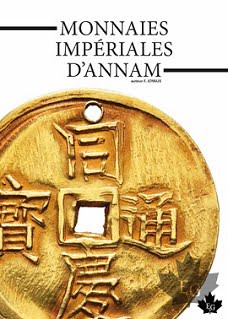 Monnies Imperiales d'Annam by Francois Joyaux
Monnies Imperiales d'Annam by Francois Joyaux
Toutes les monnaies d'or et d'argent de 1883 à 1945
All Gold and Silver Coins from 1883 to 1945
The book covers gold and silver coins/medallions and brass coins issued during the Nguyen Dynasty of Vietnam from 1883 until 1945. The text covers additional coins not included in Annam: études numismatiques by Albert Schroeder published in 1905 and from subsequent emperors until the last Emperor Bao Dai (1925-45). The author also included Vietnam War era fakes and fantasies that were previously published in the Numismatique Asiatique.
The text is in French with color illustrations that include size and weight. The book is approximately 6" x8.5" in size. The cost is €29 Euros plus €4 Euros for shipping to the United States for a total of €33 Euros. Payment by Paypal is easily done by clicking on button at the website with choice of location (choix du lieu d'exposition) for "Asia, America €33 Euros" and then pressing the "add to basket button" or "Ajouter au panier". The Paypal site will come up and you can pay through the Paypal site.
Orders and payments :
Click below to order:
https://sites.google.com/site/societedenumismatiqueasiatique/-9---serie-monnaies-d-asie
Catalogue complet, 700 ilustrations en couleurs
Complete Catalogue, 700 color illustrations, 197 pages
Références des ventes aux enchères, indices de rareté
Auctions references, rarity rating
La suite indispensable du catalogue Schroeder
The indispensable continuation of the Schroeder catalogue
29 € + port / postage (France : 7 €, Europe : 3 €, America Asia : 4 €)
To read the earlier E-Sylum article, see:
NEW BOOK: IMPERIAL COINS OF ANNAM (https://www.coinbooks.org/v22/esylum_v22n14a03.html)
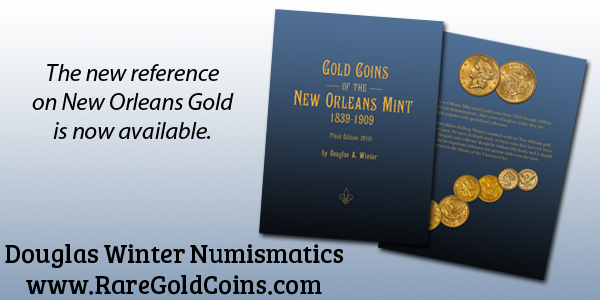
NEW BOOK: MEDALS OF AVIATION 1783-1945
While looking for other things I came across this new book published by Battenberg on the medals and badges of aviation. Here's the Google-translated text from the publisher's web page. -Editor
 Michael Joos
Michael Joos
Medaillen, Plaketten, Abzeichen der Luftfahrt 1783 - 1945
(Medals, badges, badges of aviation 1783 - 1945)
Publisher: Battenberg Verlag
ISBN: 978-3-86646-168-0
Edition: 1st edition 2018
Hardcover: 644 pages
Format: 21 x 29.7 cm cm
Description
This book is the first attempt to depict the medals, plaques and badges of aviation until 1945 in their diversity and beauty. The reader will get the biggest
rarities. At the same time, it opens up the technical development of the hot air balloon on the gas balloon and the motor-powered airship and - starting from
the possibilities of the engine - up to the aircraft. 2100 objects and more than 3500 photos. A great book in a small numbered edition.
For more information, or to order, see:
Medaillen, Plaketten, Abzeichen der Luftfahrt 1783
- 1945 (https://www.battenberg-gietl.de/sammeln/buch/medaillen-plaketten-abzeichen-der-luftfahrt-1783-1945)
NEW BOOK: VICTORIA CROSS BIBLIOGRAPHY, 2ND ED.
SPINK has published a new edition of the Victoria Cross Bibliography by Mulholland & Jordan. -Editor
 Victoria Cross Bibliography
Victoria Cross Bibliography
2nd edition
John Mulholland & Alan Jordan
With Foreword by Lord Ashcroft
Hardback, jacketed
ISBN: 978-1-912667-03-1
Many books have been written about the Victoria Cross and its recipients. The first published work on the subject appeared in 1857 - the same year as the first VC investiture.
John Mulholland and Alan Jordan's first comprehensive bibliography of the Victoria Cross appeared in 1999, representing the efforts of a team of researchers in the UK, Canada and Australia. This second edition completely updates their research, increasing the number of books listed, annotated and cross-referenced from 640 to around 1,400, and including all the Journals of the Victoria Cross Society.
The bibliography is an important contribution to Victoria Cross literature and an essential, up-to-date reference guide for anyone with an interest in the decoration.
'A wonderful asset for anyone who wants to take a serious look at the VC.' Lord Ashcroft
For more information or to order, see:
Victoria Cross Bibliography, 2nd edition by John Mulholland and Alan
Jordan (https://spinkbooks.com/index.php?route=product/product&path=59&product_id=628)

NEW BOOK: WORLD PAPER MONEY MODERN ISSUES 25TH
Krause Publications has issued a new edition of the Standard Catalog of World Paper Money, Modern Issues. The list price is $80, but it's available on Amazon for $49.24. -Editor
 Standard Catalog of World Paper Money, Modern Issues, 1961-Present Twenty fifth Edition
Standard Catalog of World Paper Money, Modern Issues, 1961-Present Twenty fifth Edition
by Tracy L Schmidt (Editor)
ISBN-13: 978-1440248986
ISBN-10: 1440248982
Standard Catalog of World Paper Money, Modern Issues, 1961-Present, 25th edition, provides the most comprehensive and complete reference on the market to world bank notes issued since 1961. You'll be impressed to find all circulating paper money issued worldwide in this fully illustrated catalog with current and completely vetted pricing for 22,000 variety listings and more than 14,000 note images.
For more information, or to order see:
Standard Catalog of World Paper Money, Modern Issues, 1961-Present Twenty fifth Edition
(https://www.amazon.com/gp/product/1440248982/)
NEW BOOK: NORWEGIAN PAPER MONEY 1695-2017
A review by editor Ursula Kampmann in this week's CoinsWeekly alerted me to a new book on Norwegian Paper Money. It's a massive book documenting a massive collection. I found another article about it at the Money-Online magazine (geldscheine-online.com). Here are a few Google-translated paragraphs. -Editor
 Kjell William Riibe:
Kjell William Riibe:
Kjell William Riibe's Norske Seddelsamling 1695 - 2017
(Kjell William Riibes Norwegian banknotes collection 1695 - 2017)
904 pages, full color illustrations,
Size 21.5 cm x 27.3 cm, hard binding in leather with gold print with dust jacket.
Trondheim, 2018.
Price: 1290,00 NOK (about 130 Euro)
ISBN 978-82-691363-0-2
After some time in trading, he started to collect Swedish banknotes because they were comparatively cheaper than Norwegian ones. In the 1980s, he bought all the Swedish banknotes he could find. He bought many at Swedish coin dealers and at auctions all over the world. But even as he had already built the largest collection of Swedish banknotes worldwide, he still did not start collecting Norwegian banknotes because they were just too rare.
At that time, most of the rare Norwegian banknotes were in private collections. It took him five years to locate the seven largest collections of Norway, which together yielded the largest collection of Norwegian banknotes in the world.
Riibe was estimated to spend more than 80,000 hours building his Norway collection, which he documented in 2018 with a veritable heavyweight of numismatic literature. The edition should move around the only 150 copies.
For more information, or to order, see:
http://www.riibe.com/
To read the complete article, see:
Riibe's Norske Seddelsamling 1695 - 2017
(https://www.geldscheine-online.com/start/riibe-s-norske-seddelsmling-1695-2017)
To read the CoisWeekly article, see:
The Ultimate Catalog of Norwegian Paper Money
(https://coinsweekly.com/the-ultimate-catalog-of-norwegian-paper-money/)
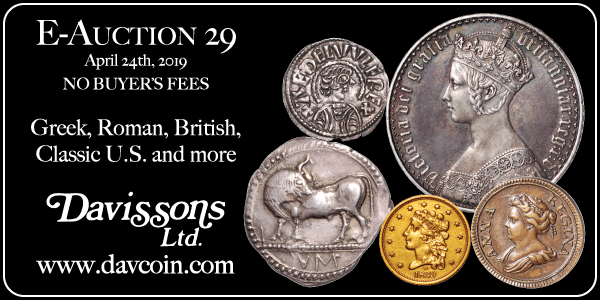
PERIODICAL: SCRIPOPHILY APRIL 2019 PUBLISHED
The April 2019 issue of Scripophily (number 109) has been published by the International Bond & Share Society (IBSS). Here are the contents. Thanks to Editor Max Hensley for forwarding the information. -Editor
• 18th Annual National Stock and Bond Show • Letters to the Editor...
• MOAF • Cox Launches Third Edition • Directory update
... and more besides
COX'S CORNER
FEATURES
Hooves to Hams
by Max Hensley
Financing the British Empire 1589-1839
by Brian Mills
Charles T. Manley Popcorn Millionaire
by Dr. Roland Schmidt and Ross Fink
The Clergy Co-operative Association (Limited): A question in parliament as the Clergy goes commercial
by Fergus Hutchison
EVENTS CALENDAR
AUCTION NEWS AND REVIEWS
A one year membership in the IBSS is $32 (three issues and other benefits). Go to
https://scripophily.org/ to join.
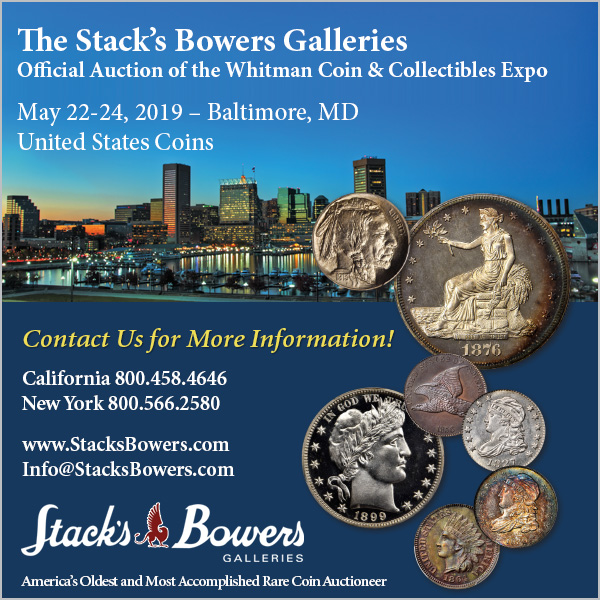
U.S. MINT NEWSLETTERS ON NEWMAN PORTAL
The latest addition to the Newman Numismatic Portal is The Mint at Philadelphia, an internal U.S. Mint employee newsletter. Project Coordinator Len Augsburger provided the following report. -Editor

If the Mint had an employee newsletter, what would be in it? Complete details of all Mint delicacies from dies to fantasy coins? Catalogs of the work of every engraver? Production records of each piece of equipment within the Mint? We can dream! But, apart from dreaming, we can actually answer this question, courtesy of John Graffeo, who scanned The Mint at Philadelphia, an internal Mint newsletter, for the period 1969-1971. These were located at the National Archives in Denver and scanned under the sponsorship of Newman Portal.
Much of the content is typical for such a publication - appeals for employee safety, lists of new employees and service anniversaries, notes on Civil Service and benefits program changes, etc. But, amid the quotidian chaff, there are a few gems. In the September 1971 issue, Engraver Frank Gasparro comments on his appearance on "What's My Line?," which aired in late 1971 or early 1972.
Gasparro notes "You certainly get coached on the show. You even have to sign a contract to verify the show is on the up and up. I thought the show would help in selling the Eisenhower dollar. The public is still not aware of the impact of the new silver dollar, nor are the people aware of the obverse and reverse design. When the panel and I discussed the reverse of our coins, like the penny, nickel, Kennedy-half and quarter, they were actually stumped as to what was on the reverses."
Also useful are notices of employee awards, which in some cases detail process improvements within the Mint, and retirement notices that lend color to the careers of Mint employees. In 1969, there is coverage of the (fourth) Philadelphia Mint opening, along with sentimental observations on the closing of the third Mint. The publication as a whole provides insight into the Mint as a workplace, a different perspective from collectors who are only interested in the end products. Additional employee newsletters will be found in box 5 of the Denver Mint archives group, Miscellaneous Correspondence and Memos 1897-1994, on Newman Portal.
Link to The Mint at Philadelphia on Newman Portal:
https://nnp.wustl.edu/library/book/545518
Link to Denver Mint Miscellaneous Correspondence and Memos 1897-1994 on Newman Portal:
https://nnp.wustl.edu/library/archivedetail/525861
This is a great find and illustrates the value of NNP for numismatic research. And thanks for the opportunity to use the word "quotidian" in The E-Sylum.
I've searched high and low for the episode but came up empty. The 1970s episode guides I can find list quests Frankie Avalon, Frank Fontaine, Frank Gifford, Frank Gorshin, Frankie Lane, Frank Sinatra, Jr., and even Frank Zappa, but no Frank Gasparro. These lists are incomplete. Can anyone help? It would be interesting to identify the exact episode and air date, and even better to find a video. Who were the fellow guests Gasparro would have met in the green room? -Editor

VIDEO: CLYDE HUBBARD AND FRIENDS
Here's a video produced by David Lisot at the 2010 ANA convention in Fort Worth, Texas. See two articles later in this issue for more on Clyde Hubbard. -Editor
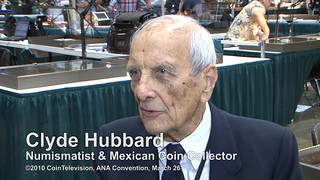 Another great numismatic video has surfaced that will be posted on the Newman Numismatic Portal. In 2010 at the American Numismatic Association
Convention David Lisot interviewed Clyde Hubbard of Cuernavaca, Mexico.
Another great numismatic video has surfaced that will be posted on the Newman Numismatic Portal. In 2010 at the American Numismatic Association
Convention David Lisot interviewed Clyde Hubbard of Cuernavaca, Mexico.
Clyde Hubbard and Friends at ANA Coin Convention March 26, 2010. VIDEO: 11:01 Interviewer: David Lisot, CoinTelevision.com with Clyde Hubbard and friends James P. Bevill, Gene Hinds, Pat Hyads, Mark Lighterman, J.R. Rollo, and Tony Tumonis.
At an American Numismatic Association Convention in Fort Worth, Texas, Clyde Hubbard talks with some of his friends about Grover Criswell, Bob Hendershot and much more. Clyde is one of the great numismatists of all time who is a renowned numismatic author and Mexican coin collector, He lives is Cuernavaca, Mexico and at the time of this interview was 94 years old.
An excerpt of the video is available for viewing on the Coin Television YouTube Channel at: https://youtu.be/HQEg63S9Hik
Numismatic Personality: Clyde Hubbard, March 26, 2010
Interviewer: David Lisot
ANA10-050
41:52
The entire interview is available on the Newman Numismatic Portal as part of the David Lisot Video Library at:
https://nnp.wustl.edu/library/multimediadetail/522852
MORE ON THE MYSTERY WB WREATH-WREATH MEDAL
Last week Jonathan Brecher discussed this unusual engraved silver medal with wreath designs on both sides. -Editor
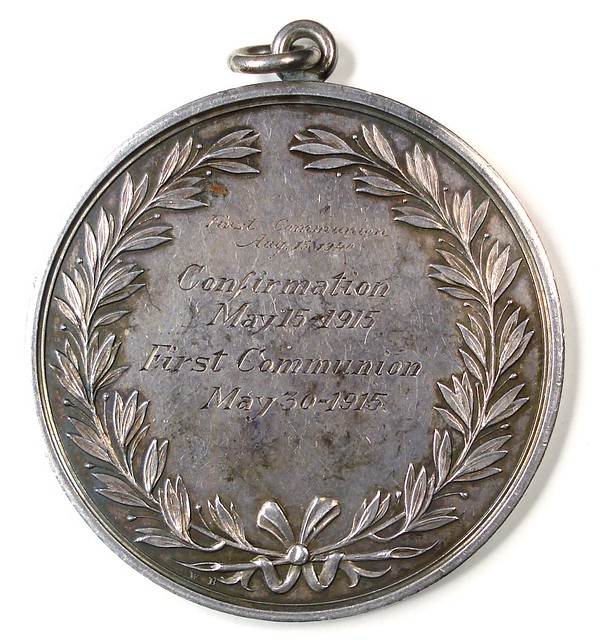

Jeff Rock writes:
Wonderful issue as always. On Jonathan Brecher's medal, the WB could stand for Wright & Bale, and not be an engraver's initials. I would also suggest carefully checking the edge - that unusual "step" to the edge might mean that the heavy outside rim is actually a silver bezel, with the loop attached to that and not to the medal itself, and that could indicate that instead of a struck medal the bezel is holding together two shells. Hard to tell without seeing it or a photo of the edge, but worth looking at! Still, a very interesting specimen.
Thanks. Tony Terranova also wrote in to suggest Wright & Bale, the New York firm of Charles Cushing Wright and James Bale, maker of medals and tokens in the first part of the nineteenth century. I passed these thoughts on to Jonathan, who copied Medallic Washington author Neil Musante on his response. -Editor
Jonathan Brecher replies:
Wright & Bale is a good thought that I hadn't considered. Now that I've considered it... I don't love it. William Barber's last works were in the 1870s, meaning that this medal would have been kicking around for 40 years before being used in 1915. Wright & Bale were from the 1830s, giving an 80-year gap. That's not impossible, of course. Just not my first choice.
Also, although I don't have a full catalog of Wright & Bale, the ones I could find of their medals are all smaller than this one (max 45 mm or so). Very little of their output is related to award-type medals. And the ones that I see signed with initials are signed with an ampersand: "W & B"
So all told, I'm thinking "not Wright & Bale".
Fortunately, we have someone who really ought to have a pretty definitive answer if I'm wrong. Neil, did Wright & Bale produce anything similar to the piece I showed in last week's E-Sylum?
As for this being two shells with a bezel, I think not on that one either. I'm seeing no sign of a gap when looking at the interior rim under a microscope. It gives a strong, clear ring test. Also (although not very clear in my pictures, there is a vertical raised area reaching inward from 1200 on both sides. It looks to me like the loop was screwed in, and pushed up the metal on both sides as it was inserted. That suggests to me that there wasn't enough room for the screw in the first place, and so likely solid rather than two shells.
On the other hand, suggesting what it isn't doesn't get us any closer to what it is. So what do I know...
Thomas Edison would argue that you ARE getting closer - we just don't know how long the journey is. He also said "Our greatest weakness lies in giving up. The most certain way to succeed is always to try just one more time." -Editor
Neil Musante writes:
I'm with Jonathan on this one - definitely not Wright & Bale. William Barber was long dead by 1915, but perhaps an unused die? The medal is curious as well. It looks like a marriage medal on one side, or possibly a baptism, and then showing the dates of communion and confirmation on the other. Later a child receives first communion in 1940??? Interesting. Can you make out the names on the front? Maybe they are Barber descendants.
Jonathan writes:
It's a communion medal, used once for the father in 1915 and then again by his daughter in 1940. I poked at their background for a bit - I have an account at ancestry.com - and I don't see any interesting numismatic connections for the previous couple of generations.
Jeff Rock writes:
I would add a quote of another wise man, Sherlock Holmes: "When you have eliminated the impossible, whatever remains, however improbable, must be the truth."
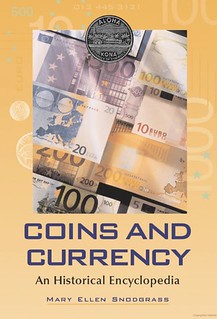 Thanks for the discussion. An enigmatic piece, to say the least. If anyone has additional thoughts or evidence, please let us know.
Thanks for the discussion. An enigmatic piece, to say the least. If anyone has additional thoughts or evidence, please let us know.
By the way, I came across information on Wright & Bale in a book I was unfamiliar with via a Google Books preview. The 572-page Coins and Currency: An Historical Encyclopedia by textbook author Mary Ellen Snodgrass was first published in 2003 by McFarland. Back in 2007 Ralf W. Boepple asked about it. If anyone has this book, would you care to write a review for us? -Editor
To see the preview on Google Books:
Coins and Currency: An Historical Encyclopedia
(https://books.google.com/books?id=UA-BCgAAQBAJ)
To read the earlier E-Sylum articles, see:
NOTES FROM E-SYLUM READERS: APRIL 7, 2019 : Another Wreath-Wreath Medal Mule
(https://www.coinbooks.org/v22/esylum_v22n14a08.html)
BOOK REVIEWS SOUGHT: 'COINS AND CURRENCY: AN HISTORICAL ENCYCLOPEDIA'
(https://www.coinbooks.org/esylum_v10n25a06.html)

NOTES FROM E-SYLUM READERS: APRIL 14, 2019
On Brummagems
Jeff Rock writes:
On Brummagems, the word was first used for the mass of lightweight counterfeit halfpence and farthing that came out of Birmingham in the 1770s-1790s, and also encompassed the British evasion copper series when those were minted in the 1790s. To this day a few British collectors still use the word in its intended derogatory sense - usually those who don't appreciate the history of these counterfeits (the British AND American economies would have failed without them since neither country ever had enough copper coinage for daily business transactions).
When I visited Birmingham a few years back I got the sense that the city had the last laugh - yes, they were famous for inexpensive products, but also high-end luxury products like those produced at the Soho Manufactory (which turned out all sorts of art objects along with coins, tokens, medals, buttons and the like). And, of course, the city got very, very rich from the trade.
To read the earlier E-Sylum article, see:
VOCABULARY WORD: BRUMMAGEM (https://www.coinbooks.org/v22/esylum_v22n14a10.html)
WWI Prison Camp Money Collected in 1917
Dave Hirt writes:
Sometimes I enjoy pulling an old auction catalog from the shelf and looking through it. Sometimes I find things that I missed on previous looks. This week while looking a Wayte Raymond Catalog of Aug. 27, 1917, I came across 8 lots of Prison Camp Money from the first World War. The war was still ongoing at this time, America had just entered it a few months previous. There were two lots of metallic pieces, and 6 lots of paper pieces. I was surprised that these items were already in collecting interest at this early date.
Interesting. The best time to collect ephemeral numismatic items is when they're actively being used, before they end up forgotten in drawers or tossed in the trash. -Editor
Hunger Striker on Call the Midwife
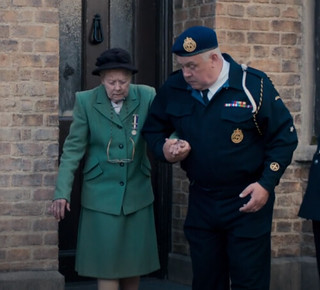 Jeremy Schneider writes:
Jeremy Schneider writes:
I always enjoy reading The E-Sylum! Just recently on the TV Show "Call The Midwife" on PBS (Season 8, Episode 2), they had a patient who had been awarded one of the Hunger Strike medals, very fitting to the recent story,
Thanks. I'm not familiar with the show, but it sounds interesting. Great to see the publicity for the Hunger Strikers. -Editor
For more information on the series, see:
Call the Midwife (http://www.pbs.org/call-the-midwife/home/)
To read the earlier E-Sylum article, see:
SELINA MARTIN SUFFRAGETTE HUNGER STRIKE MEDAL
(https://www.coinbooks.org/v22/esylum_v22n13a27.html)
Ancient Coin Image Search Feature
Shanna Schmidt is a dealer in ancient coins, an E-Sylum supporter and candidate for the American Numismatic Association Board of Governors. Her email updates chronicle her visits to coin shows and auctions. She's also written about her experience researching coin pedigrees using the Ex-Numis search service.
In a recent note she mentioned a great new search feature of another web site, AC Search. I was unable to get this into an earlier issue, but at my request Shanna reforwarded her note. Thanks. -Editor
Shanna writes:
There is a really great new feature on AC Search. If you submit an image of your coin it will search its databases and find the coin immediately. I've tried
it out for a few coins and was successful. The only downside is that it really only has coins from when auctions started to be available online. For early
auctions it isn't yet possible. The cost is very little and when you have an account then I think you get 20 or so for free (at least I had 20 free). Here is
the link to the image search:
https://www.acsearch.info/howto.html
To read earlier E-Sylum articles, see:
ANCIENT COIN AUCTION INDEX WEB SITES (https://www.coinbooks.org/esylum_v12n30a08.html)
EX-NUMIS ENABLES COIN AUCTION SALE SEARCH BY IMAGE
(https://www.coinbooks.org/esylum_v19n05a07.html)
EX-NUMIS DEBUTS ACTIVE PEDIGREE LINKS
(https://www.coinbooks.org/v20/esylum_v20n38a12.html)
Correction: 1960 Philadelphia Small Date Cent Strikings
Tom DeLorey writes:
I mis-typed my message about the 1960-SD cents. That was supposed to be "January of 1960," not "January of 1959."
We'll correct Tom's statement on our article archive. -Editor
To read the earlier E-Sylum article, see:
MODERN U.S. COINAGE MINTAGE ANSWERS (https://www.coinbooks.org/v22/esylum_v22n13a13.html)
Historical Society of Pennsylvania Layoffs
Anne bentley of the Massachusetts Historical Society writes:
In case your readership has plans to visit the Historical Society of Pennsylvania, this is important information. We sincerely hope that our sister institution weathers this storm and returns stronger than ever!
On Monday, April 8, the Historical Society of Pennsylvania announced the layoff of ten staff members, representing a 30% reduction in its workforce. The job loss is part of an action plan approved by the Board of Councilors to reduce operating expenses.
HSP will remain open to researchers and many services will be unaffected by the changes. Regular library hours will remain unchanged, and the reading room will continue to welcome researchers. Fellowships will still be offered, and grant-funded projects will continue as planned. The Pennsylvania Magazine of History and Biography, HSP's long-running scholarly journal, will maintain its regular publication schedule.
Some of HSP's programs and service will be put on hold until the organization is on stronger financial footing. Pennsylvania Legacies, HSP's biannual public history magazine, will pause publication after the Spring 2019 edition, which has just been released. Educational programming will be significantly reduced.
Sad news. -Editor
To read the earlier E-Sylum article, see:
HSP Announces Layoffs
(https://hsp.org/news/hsp-announces-layoffs#.XKz1RftFQnU.email)
Coinhunting in Remote Mexico
Pablo Hoffman writes:
A recent article in The E-Sylum about an important numismatist got me remembering a way-back encounter.
Back in the 1960s and '70s, I was living, working, and travelling throughout Mexico. Part of my time was spent far off the beaten track, in the remote areas which in those long-gone days made up much of the Mexican national territory. People lived in these isolated parcels of land deep in the unmapped mountains or forests, much as they did hundreds and even thousands of years ago. Electricity and paved roads were still well in the future, awaiting the billions of dollars that Mexico had not yet begun to invest in developing infrastructure throughout the country.
One of my goals as I wandered was to search for collectible US coins on behalf of my father. Although some did indeed turn up, the usual find of course was Mexican material, including paper money, which was ultimately to become my overriding interest.
However, certain coinages captivated me: a few crude, unofficial tokens for limited circulation, locally struck or cast, which were called fichas de hacienda. To me, they radiated personality and fascination.
On one of those forays, I might have found myself in an indigenous rancheria, a hamlet whose pre-hispanic ethnic heritage was preserved in such a pure form, that Spanish was a foreign language. Although I picked up a few words and phrases of the "hello, goodbye, thank you" variety, actual conversation in Nahuatl or Otomí or Purépecha was entirely beyond my reach. Negotiation would become a convoluted process. The solution was to send for the villager who knew Spanish; every community seemed to have at least one, and that led us to mutual understanding. This is the way that many of my hacienda tokens first came to me, and how I began to learn of their essential monetary function in the rural regions of pre-modern Mexico.
Before long, I joined the Sociedad Numismática de México. I even wrote an article for its journal, on a rare hookneck 8-Reales, Durango mint, counterstamped Y II (for Isabel II of Spain,) a coin that surfaced in the Philippines. Finding myself totally broke in Mexico City at one point in 1971, I reluctantly sold that piece to the national numismatic museum of the Banco de Mexico. (But that's definitely another story for another time!)
As my fellow members and I got acquainted, my interest in tokens became known. A colleague in the group told me that a friend of his was an advanced investigator and collector in all aspects of Mexican numismatics, and had formed a terrific collection of fichas over a period of years. He introduced us. To my surprise, his friend was a gringo, of piercing blue-eyes, a couple of decades older than I was, and clearly a pivotal figure in the Society. At first he was reserved, a natural inclination of his personality, but as we spoke about many things (rather, he spoke and I listened to outpourings of his vast knowledge,) he was increasingly animated and outgoing. That initial conversation led to others, culminating in my purchase of that collection.
And that, boys and girls, is the tale of how I met Señor Clyde Hubbard and how his collection of fichas changed hands.
Thanks, Pablo! great story. -Editor
To read the earlier E-Sylum article, see:
WARNER CLYDE HUBBARD (https://www.coinbooks.org/v22/esylum_v22n14a07.html)

VIVA CLYDE HUBBARD!
As you've seen by now, several readers wrote in about numismatist Clyde Hubbard this week. Here's a take from Gary Beals of Segovia, Spain. -Editor
Viva Clyde Hubbard!
That Spanish phrase means long live Clyde Hubbard, and he is doing just that!. The mists of time swirl in my head as I realize I first met Clyde at about age 20 back in California - a half century ago. Both my dad and I enjoyed Clyde's help in the mid-1960s when the fascination with Mexican coins was exploding in the USA. We were living in San Diego and Clyde would come into Los Angeles from time to time and we enjoyed some great visits. He was something of a legend in numismatics even then. He had been a long-time executive for a cosmetic company in Mexico.
This was just a few years after I started collecting Lincoln cents and had moved into Latin American crowns. My dad, Ed Beals, began collecting a full range of Mexican coins. I like to point out that I got him into collecting, not the other way around.
Clyde helped me with Numismatic Terms of Spain and Spanish America the 85-page Spanish to English coin terms dictionary I published in 1966. That was the year I went off into the U.S. Air Force and left collecting to some degree.
I was in contact with him in 2016 as I completed Numiscadero, the bi-lingual numismatic dictionary I created here in Spain. A real delight to find him still in the heart of Mexico and working on his collection and studies. He and other people like Erma Stevens were legends in the early Mexican coin collecting field.
To read the earlier E-Sylum article, see:
WARNER CLYDE HUBBARD (https://www.coinbooks.org/v22/esylum_v22n14a07.html)
Adrián González-Salinas forwarded two YouTube video interviews with Clyde Hubbard. One was the David Lisot video referenced elsewhere in this issue. The other is this May 2017 interview in Spanish filmed at Hubbard's home in Cuernavaca, Morelos, Mexico. Thank you! Check out the library! -Editor

To watch the complete video, see:
Clyde Hubbard: Socio fundador de SONUMEX (https://www.youtube.com/watch?v=MG7uxiOfV1A)

LINDBERGH'S AVIATION MEDALS
Last week web site visitor Eric R. Caubarreaux asked about a medal was awarded to Charles Lindbergh in September 1931 by Chiang Kai-shek. -Editor
Harry Waterson writes:
Here is a piece I wrote that was sparked by the Lindbergh/Chinese Aviation medal. I have previously written about this medal as an aside in an article about the John Gregory-Lindbergh Plaquette for The Clarion, the journal of the Pennsylvania Association of Numismatists.
This is a bit of an op-ed piece.
Colonel Charles Lindbergh and Admiral Richard Byrd were contemporaries and vied for the success in the air. Both achieved many awards for their efforts in flight and exploration. Both men were flawed. Both were very concerned about their legacy.
Charles Lindbergh immediately received many awards, medals and trophies following his solo transatlantic flight, May 20-21, 1927.
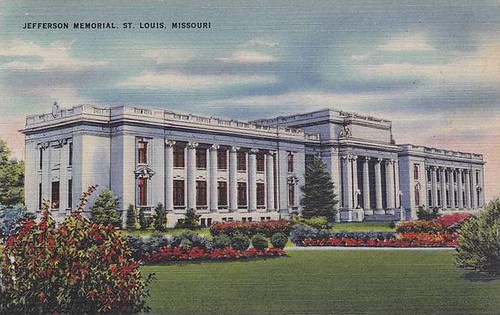
Jefferson Memorial, St. Louis circa 1930
June 18, 1927 there was an exhibition of all Lindbergh's awards to date. This exhibition was briefly mounted the afternoon of June 18th in Jaccard's Jewelry Store in St. Louis. 1 The collection was then briefly stored in a bank vault until appropriate arrangements were made for its disposition. On June 25, 1927 Lindbergh agreed to a ten day exhibition of his medals at the Jefferson Memorial, Forest Park, St. Louis, MO. In June 1932, the collection was still on display.

Lindbergh Medal exhibit photo from December 17, 1927
 Col. Lindbergh gave to the collection the Chinese Aviation Medal, authorized by the National Government Council of China, on June 21, 1932. It had
been presented to Lindbergh by General Chiang Kai-shek, President of China on September 26, 1931 in Nanking, China in appreciation of his volunteer services in
the cause of flood relief in China. Lindbergh was the first recipient of this Chinese Aviation Medal. It was the 126th medal placed among his other trophies in
the exhibition. [2]
Col. Lindbergh gave to the collection the Chinese Aviation Medal, authorized by the National Government Council of China, on June 21, 1932. It had
been presented to Lindbergh by General Chiang Kai-shek, President of China on September 26, 1931 in Nanking, China in appreciation of his volunteer services in
the cause of flood relief in China. Lindbergh was the first recipient of this Chinese Aviation Medal. It was the 126th medal placed among his other trophies in
the exhibition. [2]
Admiral Byrd achieved his transatlantic flight June 29-30, 1927 although the flight ended in the shallow water just off shore at Ver-sur-Mer, France. President Coolidge awarded Byrd the Distinguished Flying Cross for this achievement.
Admiral Byrd kept all his awards in his possession and they were part of his estate when he died. His heirs consigned all his medals and memorabilia to Sotheby's in London in 1988 for sale at auction. London was chosen because the sale included the Byrd Congressional Medal of Honor. It was then illegal to sell a Congressional Medal of Honor in the United States. It still is.
Today the Missouri History Museum, St. Louis is the public repository of all the artifacts Lindbergh garnered in his extraordinary career.

Jefferson Memorial, St. Louis today
REFERENCES:
[1] Mrs. Lindbergh Sees Medals For First Time; The St. Louis Post-Dispatch, St. Louis, MO Jun.19, 1927 p5
[2] Another Lindbergh Medal; The Chillicothe Constitution, Chillicothe, MO Jun.29, 1932 p1
Thanks, Harry. It's good to learn the medal is safely housed with Lindbergh's other medals and artifacts. Harry attached several newspaper clippings and images for context; I've only been able to include a few in the space we have. The Lindbergh collection contains far more than just medals - there are photographs, paintings, models of his "Spirit of St. Louis" airplane, and gifts from around the world, including a leaf from a Gutenberg bible, another famous first. Nearly 5 million visitors came to the exhibit by July 1931; it was valued at that time at $500,000.
While compiling images for this week's article on the 2019 IAPN book prize, I came across the new book by Michael Joos on the medals of aviation. Lindbergh falls in the pre-1945 time period covered by the 644-page book. If anyone has a copy, could you tell us what it says about this medal or Lindbergh's other medals in the Missouri History Museum in St. Louis? -Editor
To read the earlier E-Sylum article, see:
QUERY: LINDBERGH CHINESE AVIATION MEDAL
(https://www.coinbooks.org/v22/esylum_v22n14a09.html)

CAMBODIA NUMISMATIC MUSEUM OPENS
Howard Daniel passed along this article from The Phnom Penh Post about Cambodia's new numismatic museum. Thanks! -Editor

The Preah Srey Icanavarman Museum
Cambodia's first national museum showcasing the Kingdom's economic and financial evolution was inaugurated on Monday, recounting the history of its money and economy from the first century to the present day.
Commissioned by the National Bank of Cambodia (NBC), it is called the Preah Srey Icanavarman Museum, with the name chosen by Prime Minister Hun Sen.
King Icanavarman - who reigned from 616 to 637 - is a hero of the Chenla kingdom which would later become the Khmer Empire. He took Isanapura - present day Sambor Prei Kuk in Kampong Thom province - and issued the first gold coin to demonstrate his glory and the sovereignty and territorial integrity of his Kingdom, NBC governor Chea Chanto said.
Chanto said the museum's exhibits consist of 12 sections. Sections one to eight exhibit historical events related to currency and the economy since the first century Funan era to today. Sections nine to 12 illustrate the role of the monetary and banking systems in social and economic development. Each section has former coins and notes on display.
"The economic and monetary museum will play a major role in understanding the history of Cambodian currency and economics, which do not have much detailed historical documentation," Chanto said.
He added that visitors will learn about the development of the riel and be able to view currency from different Cambodian eras on display.
The Preah Srey Icanavarman Museum is housed in a two-storey building located next to the Cambodia Securities Exchange headquarters in Daun Penh district's Wat Phnom commune in Phnom Penh. Funding costs for the two-storey museum were not disclosed.
Speaking at the inauguration ceremony on Monday, Prime Minister Hun Sen highlighted the important role of the national currency in economic development and recalled historical currency use in Cambodia.
During its peak from the Funan era to the Angkor empire, Cambodia used currency when trading with other nations but did not issue its own national currency, the prime minister said. It was in the early 16th century that King Srey Chetha Thireach Rama Thepday - known as Sdach Korn - issued the Kingdom's first ever national currency to strengthen the economy, politics and national territory.
To read the complete article, see:
First monetary museum opens in the Kingdom
(https://www.phnompenhpost.com/business/first-monetary-museum-opens-kingdom)

VOCABULARY TERMS: HANDCUT, HAND ENGRAVING
Dick Johnson submitted these entries from his Encyclopedia of Coin and Medal Terminology. Thanks! -Editor
Handcut, Hand Engraving. Freehand cutting a metal surface or dies of any kind in the size required, by a human engraver. Hand engraving is in contrast to machine engraving, first developed in the 18th century and widely employed after 1900. Even with the development of diecutting machines, portrait lathes and various engraving machines, the need still continues for hand engraving and handcut dies. Cost and speed are two strong factors in favor of hand engraver, another is the ability to produce a die from a drawing without being required to have a three-dimensional pattern or model. Handcutting dies is the time honored way of diesinking - all dies were handcut in whole or in part prior to 1850 - the number steadily diminishing until only a small portion are handcut in the 20th century. See also ENGRAVING, How to tell Hand Engraving from Machine Engraving.
Handcut versus machine engraving. In some ways it is impossible to tell for certain if a struck piece was from dies that were hand engraved or if some form of machine engraving was used in their preparation. Some general guidelines may be offered but these may not be exclusive to either type of engraving. Thus the following can serve as guidelines only:
Handcut dies and pieces struck from such dies tend to have sharper lettering and detail. The devices appear well defined, the relief and lettering may have somewhat steeper sides (with steeper draft or bevel). The lettering is often produced by punches, thus similar letters may be from the same punch and be identical. The top of the lettering (from the end of the punch) may be flatter; there are sharper angles at the top and base of lettering and relief. There is a sharp juncture of the device and the background. Overall the appearance of handcut pieces is sharper, well defined images and lettering.
Pieces struck from modeled and machine cut dies are generally softer in appearance; there are no sharp angles present at either the top or at the base of lettering or detail, thus effecting the softer appearance. The lettering appears more rounded. The device appears to blend into the background or field, as there is no sharp juncture at the base. There is more modulated relief in the device, and indeed, the entire struck surface is formed from one continuous modeled plane of the three-dimensional plaster model. Portraits tend to appear more lifelike.
There are some technical reasons for the differences between the types of engraving. The most important of these is the shape of both the tracing point and the cutting point on the diecutting machine. If the tracing point cannot enter the crevice in the model it will not reproduce this in the die; also the bevel is limited to 15%, it cannot reproduce less than this angle of slope in the die, while a handcut die can accommodate as little as 5% bevel.
The two great limitations of handcutting a die are, of course, that it has to be cut the exact size and that it is difficult to correct a cut once it has been made. This corresponds to the great advantage of the oversize model for machine diecutting which can be carved and changed repeatedly before the final stage, a model can be reduced to any size die required, and any number of dies can be made from one bas-relief model (dieshell).
See engraving.
Looking for the meaning of a numismatic word, or the description of a term? Try the Newman Numismatic Portal's Numismatic Dictionary at: https://nnp.wustl.edu/library/dictionary
Or if you would like a printed copy of the complete Encyclopedia, it is available. There are 1,854 terms, on 678 pages, in The Encyclopedia of Coin and Medal Technology. Even running two a week would require more than 19 years to publish them all. If you would like an advance draft of this vital reference work it may be obtained from the author for your check of $50 sent postpaid. Dick Johnson, 139 Thompson Drive, Torrington, CT 06790.

PIERRE FLANDIN (1778-1863)
 Pierre Flandin (1778-1863), was born in Lyons, Rhône, Rhône-Alpes, France, son of Noel Flandin and Suzanne Mathevot.
Pierre Flandin (1778-1863), was born in Lyons, Rhône, Rhône-Alpes, France, son of Noel Flandin and Suzanne Mathevot.
Flandin, a wealthy dealer, had three maids born in Ireland to manage his residence.
In 1823, he was a partner with Peter L. Van DerVoort, merchants, selling "Fancy & Staple Goods", in the firm of Vandervoort & Flandin, which was dissolved on March 22, 1823.
Flandin became a renowned New York City coin and art dealer. He was the art agent for John Trumbull, and John Lewis Krimmel.
Goldstein informs us : "Flandin's chief claim to fame was that one of his customers was Robert Gilmor, Jr., a Baltimore financier and the enthusiastic collector of not only old master paintings but also works by modern English and American artists. However, not all the pictures Flandin sold Gilmor had the pedigree that the dealer claimed for them. A "Holbein" for instance, eventually proved to be the work of Cornelius de Lyons, and a "Raphael" which Gilmor questioned even as he paid for it, the work of Jan Grossart."
He was an importer of art and antiques with a gallery on Broadway, New York City, New York. His residence was at 20 East 18th Street.
On June 6, 1855, he sold his coin collection at Bangs, Brother & Company. The Flandin collection comprised 230 lots of 1,195 coins.
He died at the age of 82 years on Thursday, October 8, 1863. He is buried in Calvary Cemetery, Long Island, New York.
To read the complete article, see:
FLANDIN, PIERRE
(https://sites.google.com/a/numismaticmall.com/www/numismaticmall-com/flandin-pierre)
The entire inventory of the Lupia Numismatic Library is for sale. Individual items will be available before the remaining archives are broken up into parcels sold at philatelic auctions in the U. S. and Hong Kong. Check NumismaticMall.com frequently as dozens of new items with estimates will be posted daily until everything is sold.
All inquiries will be given prompt and courteous attention. Write to: john@numismaticmall.com .

DEL BLAND MEMORIAL EVENT AT 2019 EAC SHOW
This press release from the American Numismatic Society describes an upcoming event to remember researcher Del Bland. -Editor
Early American Coppers (EAC) and American Numismatic (ANS) will hold an event to remember specialist and friend Del Bland
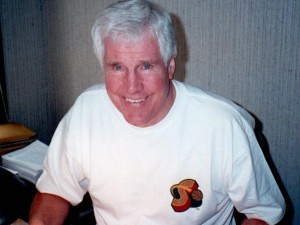 On Friday, May 3, 2019, at the Early American Coppers (EAC) Convention in Dayton, Ohio, EAC and ANS will host a get-together to allow the many
friends and colleagues of the late Del Bland to remember, celebrate, and honor this extraordinary man. He passed away on October 16, 2018.
On Friday, May 3, 2019, at the Early American Coppers (EAC) Convention in Dayton, Ohio, EAC and ANS will host a get-together to allow the many
friends and colleagues of the late Del Bland to remember, celebrate, and honor this extraordinary man. He passed away on October 16, 2018.
Delmar Norris Bland, born in 1933, first became interested in coins around the age of 17, filling slots of Whitman albums from rolls he got at the bank. Before long he was laying out what was for him real money for the coins he most wanted-among them the United States large cents that would demand his attention for the rest of his life.
Del became a full-time coin dealer in 1969, specializing in early US copper coins. Four years later he began serious research into those coins, a pursuit that more than a quarter century later, in 2000, led to the publication of the widely respected provenance and condition census published in Walter Breen's Encyclopedia of Early United States Cents, 1793-1814. It included over 4,000 coins and more than 25,000 individual entries.
Several months prior to his death, the ANS purchased Del's vast archive of research data, compiled over 50 years with meticulous information on the condition, sale prices, and ownership of large cents. This huge, largely unpublished reference work weighs over 900 pounds, and occupies 40 feet of shelf space. The Society is deeply grateful to members whose contributions made this purchase possible.
The EAC Convention will be held from Thursday, May 2, to Sunday, May 5, 2019. The memorial will be held in the evening of Friday, May 3, and ANS Librarian David Hill will be among the speakers. Additional details will be made available soon. For more information on the convention contact Convention Chairman: Jack Young (jyoung5050@aol.com) Dayton Convention Center (DCC) 22 E. Fifth Street Dayton OH 45402 (937) 333-4700 / (937) 333-4711.
To read the complete article, see:
ANS + EAC Remembers Del Bland (http://numismatics.org/eac-bland/)

YOUNG COLLECTOR CHRISTIAN HARTCH PROFILED
An article published today on the Greenwich Time web site profiles young collector Christian Hartch. -Editor

A high school senior from Greenwich is bringing a very modern approach to the ancient pastime of coin collection.
Christian Hartch, 18, was given a small collector's book for pennies by his father, Greg, when he was five. He's been obsessed with numismatics, the study of coins, ever since, and brought his enthusiasm to thousands of followers on YouTube.
It was the humble one-cent penny that started Hartch on his path as a coin collector.
"That got me really interested," he recalled. "The hobby stuck with me. ... There's a lot of different aspects to it, learning about it is fun, there's history, and different trends. And they're valuable, so you have to understand the market, and what makes it valuable."
Hartch was watching YouTube a few years ago when he had a revelation - why not shoot his own videos on coin-collecting? Since August of 2017, Hartch, a senior at Brunswick School, has been posting dozens of hours of footage, and his "Treasure Town" series has attracted some 18,000 subscribers. He discusses various coin series, runs a trivia contest, addresses questions from viewers and talks about common mistakes in the field of collecting.
"It's a way to connect, and it gets more people into coin collecting," the high school senior said. "And it's a fun community."
For his own collection, Hartch is a fan of U.S. classic commemorative silver half-dollars, which were minted from 1892 to 1954 and offer a window into the nation's past. "The art on these coins is outstanding. Nice relief, they've been well struck, they stand out from your average coinage," the young collector said.
Hartch is well-read on the subject of numismatics, and he's also gained plenty of first-hand knowledge in the business side of the field. He was the very first customer through the doors at The Happy Coin in Cos Cob when the coin shop opened in 2014.
The owner of the store was pleasantly surprised to welcome an adolescent coin-collector to the shop.
The young scholar will be attending Princeton University this fall, and he is interested in studying the subject of ancient and medieval coins. From his start as a collector of shiny one-cent pennies, he wants to delve ever more deeply into the intersection of wealth, beauty, history, archaeology and economics that are all tied up in one little metal package.
"There's that indescribable thing," he said, "that you can't put your finger on."
To read the complete article, see:
Young Greenwich coin collector puts new
shine on old hobby (https://www.greenwichtime.com/local/article/Young-Greenwich-coin-collector-puts-new-shine-on-13763823.php)

F+W MEDIA MAY LAY OFF 66 AT KRAUSE PUBLICATIONS
Scary news on the fate of Krause Publications, whose parent F+W Media has filed for bankruptcy. The firm is seeking buyers for Krause, but according to an article in the Stevens Point Journal if a buyer cannot be found all 66 people working at the Krause main office could be laid off. -Editor
The owner of Krause Publications may lay off 66 people and shutter its Stevens Point office if they can't find a buyer in the next few months.
The notice from F+W Media, based in New York, to the Wisconsin Department of Workforce Development on April 1 comes as the company looks to sell off the various media properties it owns owns amid a Chapter 11 bankruptcy it filed in March. The potential layoff targets employees at Krause Publications, formerly of Iola.
Krause Publications relocated to office space on Joerns Drive in Stevens Point last spring after the Iola Car Show acquired its historic building, according to Krause's Numismatic News and Old Cars Weekly.
F+W laid off 41 people in January 2018. The layoffs were a part of F+W's 2017 out-of-court reorganization deal with lenders to forgive the company's debt for a $15 million cash infusion and control of the company.
This month's notice from Gregory Osberg, CEO of F+W Media, says employees could still lose their jobs if the company finds a buyer. The bulk of the jobs in Stevens Point include editing, graphic design, design and advertising positions.
The company acquired Krause Publications in 2002.
I haven't heard news of any negotiations, but I haven't been asking around either - potential buyers wouldn't talk while a deal is in the works, plus it's hard to even know who else in our industry isn't having similar hard times. It's been a bad year for journalism and publishing everywhere. -Editor
To read the complete article, see:
F+W Media may
lay off 66 people, close Krause Publications' Stevens Point office
(https://www.stevenspointjournal.com/story/news/2019/04/05/krause-publications-stevens-point-may-close-f-w-media-may-lay-off/3368539002/)
To read about another longtime publisher going under, see:
Johnson Publishing
Company, the ex-publisher of Ebony and Jet magazines, files for bankruptcy
(https://www.washingtonpost.com/business/2019/04/10/johnson-publishing-company-which-produced-ebony-jet-magazines-files-bankruptcy/)
To read an earlier E-Sylum article, see:
KRAUSE PUBLICATIONS PARENT FILES FOR BANKRUPTCY
(https://www.coinbooks.org/v22/esylum_v22n11a07.html)
SMITHSONIAN: MONEY AND THE MILITARY
The Smithsonian's O Say Can You See? blog has an article by numismatic curators Emily Pearce Seigerman, Hillery York, and Jennifer Gloede about "Money and the Military". Here's an excerpt. -Editor
This week the National Numismatic Collection is celebrating National Coin Week with a series of blog posts and an Objects out of Storage program on April 19, 2017, from 1-3 p.m. in the museum's Wallace H. Coulter Performance Plaza. The theme of National Coin Week is Conflict and Courage: Money and the Military, commemorating the entry of the United States into World War I. Money funds militaries, of course, but money also conveys messages, which may influence and impact both allies and enemies. We've selected a few such objects that range from antiquity to World War II to share with you today.
War in Antiquity
Political propaganda was integral to warfare in the ancient world. The method of mass-marketing the cool, calm, and collected rulers who came in and out of
power needed to be far-reaching and overt-something akin to the modern convenience of television, radio, even billboards. The farthest reaching artifact of
antiquity was coinage.

Tetradrachm, Alexander the Great, Thrace, 300-281 BCE
Alexander the Great and his generals launched perhaps the greatest and most widespread use of coinage as propaganda. Coins of Alexander promote an image of him as a divine, beautiful, and powerful ruler. His coins don't just depict him as one divinity-sometimes he is adorned with horns as the son of the Egyptian god Ammon, sometimes he wears a lion skin denoting Hercules, and sometimes he dons an elephant headdress displaying his prowess in battle against the Persians!
18th-Century Spiritual Warfare

Chinese Coin Sword, China, 18th century
The daggers and spears of men are not the only concerns of soldiers. The coin sword, an art unique to south China, is believed to hold power that can drive away evil spirits. It is a charm still used by some in China, predominantly as an element of feng shui. Coin swords are made by fashioning threaded coins around one or two iron rods.
Traditionally, the coins used in a sword's construction must all be from a single emperor's reign, and the cord or wire which binds them together must be red. It takes at least 100 cash coins to create these swords, as they span about two feet in length. These swords are hung on the walls of houses as a warning to evil spirits. The older the coins, the more effective the sword!
To read the complete article, see:
Money and the military: How numismatics aided and affected war efforts
(https://americanhistory.si.edu/blog/money-and-military)

NUMISMATIC NUGGETS: APRIL 14, 2019
Here's a selection of interesting or unusual items I came across in the marketplace this week. Tell us what you think of some of these. -Editor
1656 Oliver Cromwell Gold Broad

Oliver Cromwell (1656-58), Gold Broad of twenty shillings dies by Simon, issued 1656 and minted in Pierre Blondeau's Drury house, London mint. Laureate head left,
WOW! What great coin! From Baldwin's new stock listings. -Editor
To read the complete lot description, see:
1656 OLIVER CROMWELL GOLD BROAD
(https://www.baldwin.co.uk/product/1656-oliver-cromwell-gold-broad/)
Hard Rubber Toilet Brush Token

449 (lion holding shield inscribed incuse: LIONITE) / FLORENCE MFG. CO / FLORENCE, MASS / TOILET BRUSHES / MIRRORS BUTTONS & ORNAMENTS // 1776 (monogram: USA) 1876 / Centennial, black vu rd 38mm x 4.4mm thick.
From Duane Feisel's upcoming May 2019 Mail Bid Sale. -Editor
1958 Judo World Championship Medal
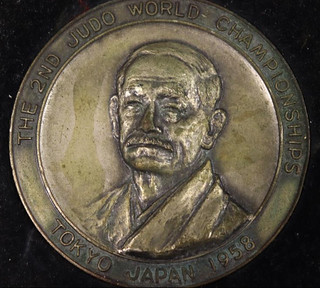

Description: Double sided round judo medal, E.J. Mede named engraved on back, Tokyo Japan. In original velvet frame holder (backing is missing). Medal in great condition.
Can't say I've ever seen a Judo medal before. -Editor
To read the complete lot description, see:
Lot 30: 1958 Judo World Championship Medal
(https://www.invaluable.com/auction-lot/-1-c-6BA463E835)
THE BOOK BAZARRE
WAYNE'S NUMISMATIC DIARY: APRIL 14, 2019
 Tuesday April 9, 2019 was the monthly dinner meeting of my Northern Virginia numismatic social group Nummis Nova. Robert Hoppensteadt was our host,
and we convened at Delia's in Alexandria. Eric Schena was waiting outside as I looked for parking. After finding a spot in a public garage I found Eric and
Dave Schenkman at the hostess station and soon we were seated at our table for the evening. Other members quickly followed. I was seated across from Eric and
Dave, and between Steve Bishop and Mike Packard. Other attendees included Chris Neuzil, Tom Kays, and Julian Leidman.
Tuesday April 9, 2019 was the monthly dinner meeting of my Northern Virginia numismatic social group Nummis Nova. Robert Hoppensteadt was our host,
and we convened at Delia's in Alexandria. Eric Schena was waiting outside as I looked for parking. After finding a spot in a public garage I found Eric and
Dave Schenkman at the hostess station and soon we were seated at our table for the evening. Other members quickly followed. I was seated across from Eric and
Dave, and between Steve Bishop and Mike Packard. Other attendees included Chris Neuzil, Tom Kays, and Julian Leidman.
Dave brought along a copy of the new edition of the Civil War Token Society's Patriotic book.
Gabriel Wacht Five Minutes Work Token
Eric Schena picked up from me the bug of collecting Labor Exchange currency, and he's made some great finds. He showed us a great eBay purchase of a
nickel-sized token I'd never seen or heard of before. It's 21mm in diameter and made of aluminum.


Obverse: MEDIUM OF EXCHANGE FOR FIVE MINUTES WORK ***** (map of the Western hemisphere)
Reverse: MAY BE REDEEMED ON RETURN TO GABRIEL Z. WACHT * (map of the Eastern hemisphere)
Eric's research turned up the crazy story of a related token by the issuer being found in, of all places, the stomach of a shark. Yes, I was already enjoying a glass of wine by this point in the evening, but it's true and Eric has a newspaper clipping to prove it. See his article later in this issue for more.
Toned Morgans and Teddy's Smile
Steve Bishop brought along some nice toned Morgan dollars, one of his many specialties. But the holders were the main thing of interest to me.


Steve also brought this cool Teddy Roosevelt piece: "Teddy's Smile."

Baseball Schedule Tokens
In keeping with the spring season Dave Schenkman brought along some rare baseball schedule tokens. Click on the image to find higher-resolution images on our
Flickr archive.


1. In 1994 the Birmingham Barons were in the limelight when ex-basketball superstar Michael Jordan was assigned to the team. The token is brass, 38mm.

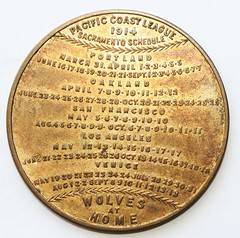
2. The Sacramento Wolves was a minor league team. Charles F. Doyle, who issued the token, was a dealer in cigars, tobacco, etc. Brass, 38mm.
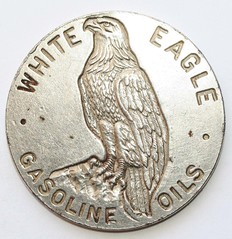
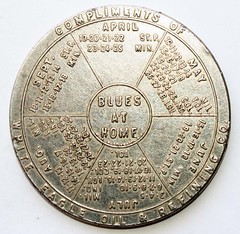
3. The Kansas City Blues, a class AA minor league team, was part of the American Association. The White Eagle Oil and Refining Company was located in Kansas City, Missouri, with a branch in Wichita, Kansas. The 41mm token is steel.
In conversation I recalled a great exhibit from a coin convention with medallic baseball season tickets. The talk put me in a receptive mood for this New York Times article found via the April 9, 2019 News & Notes email from the Society of Paper Money Collectors (SPMC)
For more than a century, baseball fans in Chicago have saved ticket stubs to preserve memories, both fond and frustrating, of their beloved Cubbies.
Some Cubs' tickets - like one from the 1932 World Series in which Babe Ruth is said to have "called his shot" before homering for the Yankees - are worth thousands. But most, sitting in drawers or pasted into scrapbooks, are valuable simply as physical links to the past.
That's over. This season the Cubs have joined more than a dozen other Major League teams in eliminating paper tickets in favor of digital versions, downloaded to apps and displayed on phones.
And so ticket stubs join theater playbills, picture postcards, handwritten letters and framed photos as fading forms of preserving our memories. It raises the question, Is our view of the past, of our own personal history, somehow different without hard copies?
To read the complete article, see:
Does Anyone Collect Old Emails?
(https://www.nytimes.com/2019/04/05/opinion/memory-collections.html)
It had been another great evening of numismatic fellowship. Next week I travel to New York City for a conference for my day job. There won't be much time for numismatics, but one never knows. Have a great week, everyone.
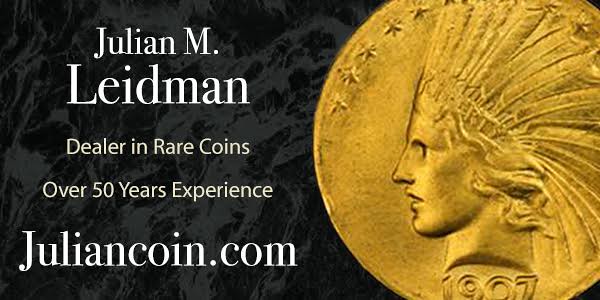
WACHT AND HIS FIVE MINUTES WORK TOKEN
As noted in my Numismatic Diary elsewhere in this issue, Eric Schena recently acquired a great little token relating to the Labor Exchange movement in the United States. He submitted this article summarizing his preliminary research. Thank you! -Editor


One of the various "less well traveled" numismatic paths that I have taken a great liking to of late have been scrip issued and used by the various branches of Giovanni DeBernardi's Labor Exchange. The Labor Exchange movement was a progressive collective movement in the 1890s that spread throughout primarily agricultural and rural areas of the United States and used the concept of bartering goods for labor, a direct response to the bimetallism question and the Panic of 1893. The Labor Exchange largely died out by c. 1905, but left behind a number of numismatic artifacts behind, primarily in the form of standardized series of paper scrip denominated in hours of labor and fractions thereof.
A recent listing on eBay intrigued me considerably, an aluminum token good for 5 minutes of work. The token was ostensibly associated to the Labor Exchange, so I bid and subsequently won the piece. The token is an aluminum piece 21mm in diameter and has a delightful representation of the globe on both sides. The obverse legend reads MEDIUM OF EXCHANGE FOR FIVE MINUTES WORK ***** and has a map of the Western Hemisphere while the reverse reads MAY BE REDEEMED ON RETURN TO GABRIEL Z. WACHT * and has a map of the Eastern Hemisphere.
I have been researching this piece to get further details on Wacht as well as if it really was a part of the Labor Exchange, but have only come up with some rather intriguing but unfortunately non-definitive tidbits. Gabriel Zacharias Wacht was born sometime in 1833 most likely in Stockholm, Sweden and emigrated to the US, apparently to Northampton County, PA. He also served in the Civil War, joining in Jan.25, 1865 then mustered out on July 27, 1865. Details are sketchy, but he seems to have moved around a bit, before settling in San Francisco in the late nineteenth century, then finally in Sawtelle, then an independent city near Los Angeles.
Sometime in the 1880s, he joined the Free Love movement headed by Moses Harman centered in Valley Falls, KS. Harman was a freethinker and suffragist who desired to see women's emancipation from sexual slavery and published a radical underground newspaper called, Lucifer the Light-bearer. Wacht, then living in Boston, wrote a letter of support in the 3 December 1886 issue of Lucifer indicating his desire to enter into a marriage along the lines of the Free Love model. By 1891 Wacht moved to San Francisco where he himself wrote a pamphlet, Catechism on the Science of a Universal Religion, which was distributed through Harman's publishing houses (I have not been able to locate a copy, unfortunately). Wacht made a living as a watchmaker in San Francisco at least according to 1891 and 1892 city directories. In 1910, Wacht was very much still a part of the Free Love movement and even placed the following personal ad in a 1910 issue of The Humanitarian Review:
Wanted Lady Companion: Is there among the readers of The Humanitarian Review a healthy and honest but homeless and friendless woman who would like to adopt a vegetarian diet and come and make her home with me for mutual cheer and care? I am an old man and a veteran of the civil war and have only my home and a pension of $20.00 per month on which to depend for support. Address: Gabriel Z. Wacht, at 202 Ohio ave., Sawtelle, Los Angeles Co., Cal.
It is not known if he found his companion; Wacht died on 30 December 1911 and is buried in Los Angeles.
 One fascinating postscript to the Wacht story comes in the form of an article in the Madera, Cal. Tribune on 12 March 1923 headlined "Big
Mystery for Devil Dogs." The newspaper had received a query from some U. S. Marines - "Devil Dogs" - stationed in San Francisco. One of the
Marines, Sgt. Harry Ervin, found a "small medal" in the stomach of a shark that was harpooned off the coast of Mazatlan in Mexico in 1914. While the
article does not mention what the medal was made of, it does describe it:
One fascinating postscript to the Wacht story comes in the form of an article in the Madera, Cal. Tribune on 12 March 1923 headlined "Big
Mystery for Devil Dogs." The newspaper had received a query from some U. S. Marines - "Devil Dogs" - stationed in San Francisco. One of the
Marines, Sgt. Harry Ervin, found a "small medal" in the stomach of a shark that was harpooned off the coast of Mazatlan in Mexico in 1914. While the
article does not mention what the medal was made of, it does describe it:
"Issued by Gabriel Z. Wacht, San Francisco, California, 1891" reads the outer circle of letters on one side of Ervin's medal. In the center is a small enameled floral design surrounded by eight stars and the words: "To Uncle Sam for value received." On the other face of the disc appears the numeral five. Around the dial are the words: "Medium of exchange of five minute service. Standards of measure average time."
The very last paragraph says it all and the questions remain as valid now as they did in 1923:
Who was Gabriel Wacht? Why did he make a strange medal that acknowledges an indebtedness of some sort to Uncle Sam? How did the medal find its way into the digestive tracts of a shark? If anyone can answer these questions: "tell it to the marines."
At least one other Wacht medal or token is known. In the "Mavericks" column of the April 1971 TAMS Journal, the following piece is described:
2084. RETURN FOR REDEMPTION TO GABRIEL Z. WACHT / (globe of Europe, Africa and Asia)
Reverse- EVIDENCE PF CLAIM TO ONE HOUSE SERVICE / (globe of North and South America)
28mm, silver, round
The reverse legend likely is supposed to read EVIDENCE OF CLAIM TO ONE HOUR'S SERVICE given the similarity to the medal found in 1914 and the token I recently bought off of eBay.
Given Wacht's association with the social progressive movements of the nineteenth century, there is a possibility he had some sort of association with the Labor Exchange. More research is certainly required into this wonderful token. I would love to hear from other collectors and researchers who might have more information on Wacht or similar tokens.
Thanks, Eric! Great research. Much more is yet to be learned about these pieces and their issuer, but this is a great head start. Who can help? The entire Labor Exchange movement is ripe for a thorough numismatic research treatment. -Editor
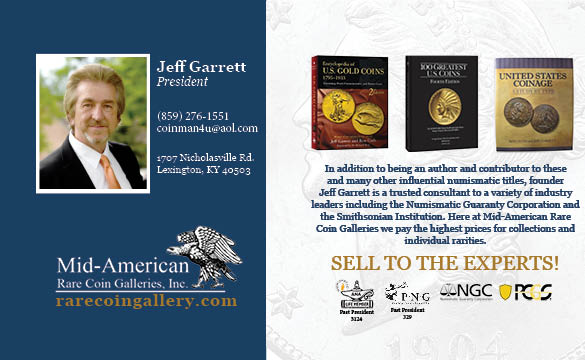
JEFF BURKE'S SAINT-GAUDENS DOUBLE EAGLE QUEST
Jeff Burke submitted this article on his quest to choose and locate a great Saint-Gaudens $20 gold piece for his collection. Thanks. -Editor
by Jeff Burke

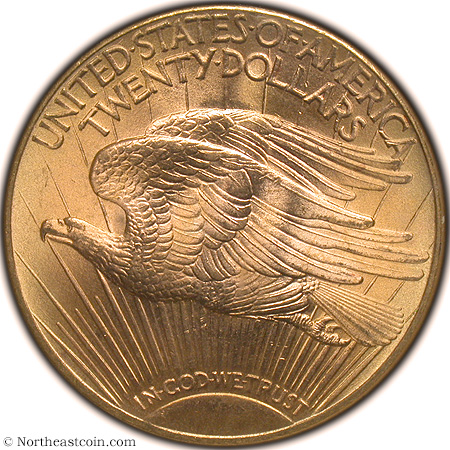
Introduction
Learning more about Saint-Gaudens double eagles has sparked the bibliophile in me! My ongoing fascination with Saint-Gaudens double eagles (SGDE) started with
reading books about the 1933 double eagle. I had the privilege of seeing the 1933 Farouk double eagle specimen at the New-York Historical Society in August
2013 (see my "Star of the Show: A 1933 Double Eagle," in The Nebraska Numismatic Association Journal, vol. 57, issue 4 (October/November/December 2013),
pp. 16-19, for more details).
Curious to learn more about these fabled coins, I read Selling America's Rarest Coin: The 1933 Double Eagle, David Alexander, 2002; Illegal Tender: Gold, Greed and the Mystery of the Lost 1933 Double Eagle, David Tripp, 2004; Double Eagle: The Epic Story of the World's Most Valuable Coin, Alison Frankel, 2006; and Striking Change: The Great Artistic Collaboration of Theodore Roosevelt and Augustus Saint-Gaudens, Michael F. Moran, 2007. I also devoured A Handbook of 20th-Century United States Gold Coins: 1907-1933, David W. Akers, 2008; A Guidebook of Double Eagle Gold Coins, Q. David Bowers, 2004; Renaissance of American Coinage: 1905-1908, Roger Burdette, 2006; and Collecting and Investing Strategies for United States Gold Coins, Jeff Ambio, 2008.
Possessing a large disk of Saint-Gaudens gold has always been visually appealing to me. I previously had a 1922-S PCGS MS 63 double eagle and a 1910-D NGC MS 64 double eagle in my collection. I traded these double eagles for other coins and hadn't owned a Saint-Gaudens $20 since 2015. To my surprise, I really missed owning one! Perhaps owning a gold coin makes me feel special. I also love the design.
Conducting Research
After contemplating the possibilities, I decided to pursue a better date SGDE in a higher grade. My focus narrowed to an examination of 1923-D double eagles:
"A choice or gem specimen is usually a treat to behold, the very definition of eye appeal!" (David Bowers, in reference to the 1923-D double eagle, A
Guidebook of Double Eagle Gold Coins, p. 266). I discovered that 1923- D double eagles are plentiful, but have a much smaller population compared to common
date SGDE. Here is another reason why I chose this particular coin: "...As most examples (1923-D) are boldly struck and show radiant luster, this date (and
mintmark) is often chosen to represent the type if just a single coin is desired." (Jeff Garrett, Description & Analysis for the 1923-D Saint-Gaudens
double eagle, NGC Coin Explorer).
The next step was to order and read Saint-Gaudens Double Eagles: As Illustrated by the Phillip H. Morse and Steven Duckor Collections, by Roger Burdette, ed. by James L. Halperin and Mark Van Winkle, published by Heritage Auctions in 2018. Despite not having a table of contents or index for quick reference, it was a joy to read! My favorite portions were "Background" about United States International Gold Shipment and the engaging Chapter Six - "Lost and Found - Survival of U.S. Gold Coins." It took Burdette five years to research this masterpiece and another year to write it. (See Wayne Homren's review of this volume in The E-Sylum, vol. 21, Number 28, July 15, 2018, for more information). This tome is well worth the money!
I learned "...it is estimated that out of 70,290,930 Saint-Gaudens double eagles manufactured between 1907 and 1933, only 2,966,565 coins, or four percent, survive in all states of preservation." (Burdette, Saint-Gaudens Double Eagles, p. 612). The 1923-D is the last mint marked coin in the Saint-Gaudens $20 series readily available to collectors before surviving populations dwindle and prices escalate. (Burdette, p. 397). The 1923-D saw extensive shipment overseas. "Most pieces seemed to have been preserved in foreign holdings, most likely in Argentina or Brazil (accepted as legal tender), where it was common practice to leave U.S. gold untouched in its original bags." (Burdette, p. 397).
Making the Purchase
 I worked through my old 2007 list of 31 favorite coin dealer websites and other numismatic websites to examine 45 to 50 specimens of 1923-D double
eagles. After perusing numerous dealer websites on the Certified Coin Exchange, e-bay and other sites, I kept returning to a 1923-D NGC MS 65* Star Designation
double eagle that I saw on the Northeast Numismatics online inventory. Unfamiliar with the NGC Star notation, I conducted some research. According to the NGC
Census as of March 21, a total of 1,389 SGDE are listed with the Star Designation, which is 0.14% of SGDE graded by NGC.
I worked through my old 2007 list of 31 favorite coin dealer websites and other numismatic websites to examine 45 to 50 specimens of 1923-D double
eagles. After perusing numerous dealer websites on the Certified Coin Exchange, e-bay and other sites, I kept returning to a 1923-D NGC MS 65* Star Designation
double eagle that I saw on the Northeast Numismatics online inventory. Unfamiliar with the NGC Star notation, I conducted some research. According to the NGC
Census as of March 21, a total of 1,389 SGDE are listed with the Star Designation, which is 0.14% of SGDE graded by NGC.
Tom Caldwell founded Northeast Numismatics in Concord, Massachusetts, in 1964. "Tom is a firm believer that an educated collector is necessary to a strong and sustainable coin market, and has taken great efforts to teach youngsters (and elders) the essentials of coin collecting." (Northeastcoin.com). Providing numismatic education can help collectors learn more about their collecting interests and encourage others to explore the wonders of our hobby.
I am thrilled to own this beautiful coin! Did it spend decades in Brazil or Argentina? I wanted to keep this 1923-D double eagle next to me forever so I could admire it at my leisure. Reluctantly, I put it in a bank safe deposit box for safekeeping.
Note: Chris Clements of Northeast Numismatics kindly provided obverse and reverse images of my double eagle to accompany this article. Thanks also to Paul Sandler for fielding my questions about Saint-Gaudens double eagle NGC Star Designation coins.
Talk about buying (and reading) the book before the coin! Congratulations on your well-thought-out purchase. Great coin! -Editor
Tom Caldwell writes:
The 1923-D has always been our favorite date as far as possessing an amazing look. The impurities in the metal that were used for the pieces that year in Denver have a look unlike all the other years of the series. Great choice by Jeff.
To read the earlier E-Sylum article, see:
NEW BOOK: SAINT-GAUDENS DOUBLE EAGLES
(https://www.coinbooks.org/v21/esylum_v21n28a03.html)

MEDALS OF THE JACOBITE REBELLION
The Davisson's E-Auction 29 closes Wednesday, April 24th. Allan Davisson published an article with some historical context to a few particularly interesting medals in the sale. With permission, we're republishing it here. Thanks! -Editor

The Young Pretender
The last Stuart monarch had been dead for three decades and the Hanoverians were on the British throne. James ("The Old Pretender"), son of James VII and Mary of Modena had been unsuccessful in an attempt to gain the throne in 1715 and install himself as James III. His son Charles ("Bonnie Prince Charlie") launched yet another effort to establish a Stuart ruler, landing on an island in the Hebrides in July 1745. He built an army of highlanders that was successful in taking over Edinburgh by September.
But the English throne was the goal, and after some initial invasion successes the English responded by bringing the commander of the English army in Flanders back to England. The Duke of Cumberland, son of George II, led a dominant force north, taking back Carlisle on his way. Arriving in Aberdeen in late February, he led his army north and east and at Culloden, just east of Inverness, the two forces met. Superior leadership, forces, and weaponry brought about a devastating defeat of the Jacobite army. Cumberland followed his successful defense of England with persecutions and reprisals. This became the last of the long string of Scottish battles with the English, a bloody history marked by a long series of finely produced medals by the English marking the events.

Carlisle Recaptured, Jacobite Rebels Retreat to Scotland
The siege and capture of Carlisle was an important event of the Jacobite uprising. Forces loyal to Bonnie Prince Charlie captured the city of Carlisle and Carlisle Castle on 14-15 November 1745. But Charles was not strong enough to hold it, and the Hanoverian army under the Duke of Cumberland besieged and took back Carlisle in December. The prisoners, the so-called Manchester Regiment, were held in a dungeon in terrible conditions until they were brought out for execution.

Battle of Culloden
Culloden was the last battle of the Jacobite Rebellion on British soil, and it took place on April 16th, 1746 on Drummossie Moor above Inverness, Scotland. A strong army of King George II led by his son the Duke of Cumberland easily beat Charles's forces. The battle only lasted one hour, and the Jacobites who survived the battle were hunted down and killed, earning Cumberland the title 'Billy the Butcher.' Charles evaded capture by traveling disguised as an Irish maid, and went into exile in France for around 40 years. Culloden was the final confrontation of the Jacobite Rebellion, and ended the claim of the descendants of James II to the British throne.

Battle of Culloden
For more information on the sale, see:
https://davcoin.com/

WEST VIRGINIA'S UNCLAIMED CIVIL WAR MEDALS
In the better-late-than-never department, Gary Beals forwarded this story from Time magazine about West Virginia's search for descendants of Civil War soldiers. Thanks! -Editor

In 1866, the West Virginia legislature passed a resolution authorizing the distribution of medals for officers and soldiers who were honorably discharged, killed in battle or who had died of causes related to battle wounds. The medals were "a slight testimonial of the high appreciation, by the State, of your Devotion, Patriotism and Services," as West Virginia's first Governor, Arthur Boreman, wrote in a letter to a veteran in 1867. And the war was particularly important to West Virginians, as it only became a state in 1863, after a two-year effort launched by Virginians who wanted to stay in the Union.
The state authorized the minting of 26,000 medals to honor the men who fought in its regiments. But, of that number, there are 3,392 that haven't been claimed yet.
Now, with the help of new technology, the state is making an effort to see that those medals get to the descendants of those who served. People who believe they have ancestors who served in West Virginia can search the list of names of medal recipients on the website for the state's archives and apply to prove that they are related.
West Virginia wasn't the only state in the Union to authorize these medals, but it was among the earliest and its process of distributing medals is unique. The same year West Virginia authorized its medals, Ohio ordered medals from Tiffany & Co. for Buckeyes who had signed up to fight and re-enlisted. Around the 40th anniversary of the Civil War, the New Jersey legislature signed off on three medals. And similar to West Virginia, Massachusetts - which authorized medals in 1906 - has a collection of more than 800 unclaimed "Minutemen" medals, but no plans to distribute them. (Brigadier General Leonid Kondratiuk, Director of Historical Services for the Massachusetts National Guard, cites lack of resources, and says he has seen only a few cases of descendants coming forward in his last 20 years in the job.) Representatives of the Ohio, New York and New Jersey historical military records divisions told TIME that they don't have a stash of unclaimed medals.
"I've never seen any other state [besides West Virginia] have a notice out saying 'we have medals still,'" says Robert J. Wolz, historian for the Sons of Union Veterans of the Civil War. "Most of them were issued when the veterans were alive."
By his count, there were about 409,000 Union veterans alive in the 1890s, just under 250,000 by around 1900 and about 34,000 in the 1920s.
The Grand Army of the Republic (GAR), which was the preeminent organization of Union veterans, advertised the medals. But the more veterans that passed away, the more likely it became that knowledge of these medals has been forgotten in families. In the case of the West Virginia medals, there was an uptick in interest in 1963, around the 100th anniversary of statehood - but generally, the claims have come in dribs and drabs, according to Randolph Marcum, who carries out the medals program at the West Virginia State Archives and is a veteran himself.
But as genealogy websites have grown in popularity, so too has awareness of these unclaimed medals.
Jerry Holley, 49, discovered his great-great-grandfather Andrew J. Halley's name on the list of West Virginia medal recipients through MyHeritage.com in 2017. (The spelling of their surname name changed in the intervening years.) The Israel-based genealogy and DNA-testing service helped Holley, who lives in Thornville, Ohio, polish his family tree and track down U.S. Census documents he needed to prove the medal belonged to his family. Halley even discovered that his great-great-grandfather had fought against one of his other great-great-great grandfathers, Anderson J. Bradley, who was on the side of Confederate Virginia - not so surprising a phenomenon, given the history of the separation of the two states.
Making a claim can be a long process. Birth, death and marriage records can be searched on the West Virginia State Archives website, but only up to a point. When West Virginia was part of Virginia, the counties weren't required to keep records of births and deaths until 1853, so the research is hard when it comes to tracing people who were born prior to the split - which was the case for the men who served in the Civil War. In addition, U.S. Census records before 1850 just listed the head of household by name, and use tick marks to count off other members of the family. That means people making a claim may have to dig for other types of verification, such as records of a will, land ownership, marriage announcements in newspapers or obituaries that list family members who survive the deceased. Many medal recipients also scattered and moved out West after the war, making them harder to trace.
To read the complete article, see:
West Virginia Is Looking for the Descendants of Civil War Veterans Who Never Claimed Their Medals
(http://time.com/5567482/civil-war-medals/)
GIANT PCGS CURRENCY SHIPWRECK NOTE SLABS
The Sample Slab Update #31 (April 2019) published by David Schwager pictured what must be the largest grading service slabs created to date. I've never seen one of these babies. Thanks to David for permission to publish this excerpt. Contact him at davidschwager@hotmail.com to be added to the mailing list. -Editor
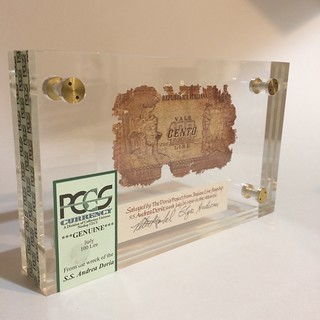 The Italian ocean liner Andrea Doria sunk off Nantucket in 1956. In 1981, divers recovered a Banco di Roma safe and the currency inside. The
salvagers sandwiched some of the notes in large lucite holders. In 2008, PCGS Currency certified the notes, applying their seals and labels.
The Italian ocean liner Andrea Doria sunk off Nantucket in 1956. In 1981, divers recovered a Banco di Roma safe and the currency inside. The
salvagers sandwiched some of the notes in large lucite holders. In 2008, PCGS Currency certified the notes, applying their seals and labels.
These are the largest slabs of which I know, weighing over three pounds. They measure 9" by 6" and all come in presentation boxes. Shipwreck coins exist from several well-known wrecks, but when did you last see shipwreck currency?
These come in four varieties: Italy 1000 lire (the most "common"), US $1 silver certificates (the most popular), and Italy 50 lire and 100 lire (the scarce types). If you look on eBay or other online resources, you will see sales of the 1000 lira and $1, but I can find no comparables for the 50 and 100 lire. They are the scarcest of the Andrea Doria relics.
David Adds:
Taken as a whole, they are the largest, and certainly heaviest, slabs I have seen. There are some holders that are larger in two dimensions. PCGS Currency and PMG made (thin) holders for uncut currency sheets. Certified Guarantee Company (CGC), the comic book grader, makes slabs that are much lighter and thinner but larger in two dimensions.

LOOSE CHANGE: APRIL 14, 2019
Here are some additional items I came across in the media this week that may be of interest. -Editor
Book Bound in Wood From Roman Times
For the bibliophiles, here's a story about an interesting book bound in wood dating back to the era of Emperor Hadrian. -Editor
 It was made for an 1875 first of Lapidarium Septentrionale: or a Description of the Monuments of Roman Rule in Northern England, a work edited
by John Collingwood Bruce for the Society of Antiquities of Newcastle and published by Bernard Quaritch.
It was made for an 1875 first of Lapidarium Septentrionale: or a Description of the Monuments of Roman Rule in Northern England, a work edited
by John Collingwood Bruce for the Society of Antiquities of Newcastle and published by Bernard Quaritch.
The work itself is illustrated with plates and maps, but it is the binding of this copy that marks it out.
It is "formed of wood used in the foundations of the Roman Bridge built over the Tyne at Newcastle… by the Emperor Hadrian, AD120 and was made for Collingwood Bruce at Alnwick Castle."
To read the complete article, see:
Binding made of wood from
Roman bridge (https://www.antiquestradegazette.com/print-edition/2019/april/2387/auction-reports/binding-made-of-wood-from-roman-bridge/)
How the Greenback Came About
Howard Daniel forwarded this April 1, 2019 Washington Post article for kids highlighting the first "greenback". Thanks. -Editor
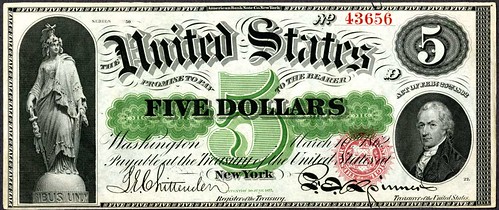
In 1861, Congress needed to find a practical way - a currency that didn't rely on gold or silver - to pay for the Civil War and its soldiers. So the United States was introduced to the first government-regulated paper bills, also called "demand notes."
Many would think the $1 would be the first paper bill, but the first bills were the $5, $10 and $20.
The bills were also called "greenbacks," a name Civil War soldiers came up with. The color - used to print the back of the bill - had a purpose. To prevent people from counterfeiting, or printing fake money, the government turned to science.
"What chemists were looking for was a way to create an ink that could not be erased," Noll said. "And so one chemist in the 1840s came up with this ink that couldn't be removed and has a special chemical layer. It happened to be green."
To read the complete article, see:
U.S. currency has a rich history
(https://www.msn.com/en-us/kids/people-places/us-currency-has-a-rich-history/ar-BBVvHQ0?li=BBnb7Kz&ocid=HPDHP17)
Revisiting the Dutch Tulip Craze
The numismatic market follows natural cycles, including notable booms and busts. The 1630s Dutch financial craze for tulip bulbs is sometimes cited by numismatic investment writers as an example of a classic boom and bust. Nick Graver forwarded this article which takes a fresh look at the historical evidence. Thanks. -Editor
 Right now, it's Bitcoin. But in the past we've had dotcom stocks, the 1929 crash, 19th-century railways and the South Sea Bubble of 1720. All these
were compared by contemporaries to "tulip mania", the Dutch financial craze for tulip bulbs in the 1630s. Bitcoin, according some sceptics, is "tulip mania
2.0".
Right now, it's Bitcoin. But in the past we've had dotcom stocks, the 1929 crash, 19th-century railways and the South Sea Bubble of 1720. All these
were compared by contemporaries to "tulip mania", the Dutch financial craze for tulip bulbs in the 1630s. Bitcoin, according some sceptics, is "tulip mania
2.0".
Why this lasting fixation on tulip mania? It certainly makes an exciting story, one that has become a byword for insanity in the markets. The same aspects of it are constantly repeated, whether by casual tweeters or in widely read economics textbooks by luminaries such as John Kenneth Galbraith.
Tulip mania was irrational, the story goes. Tulip mania was a frenzy. Everyone in the Netherlands was involved, from chimney-sweeps to aristocrats. The same tulip bulb, or rather tulip future, was traded sometimes 10 times a day. No one wanted the bulbs, only the profits - it was a phenomenon of pure greed. Tulips were sold for crazy prices - the price of houses - and fortunes were won and lost. It was the foolishness of newcomers to the market that set off the crash in February 1637. Desperate bankrupts threw themselves in canals. The government finally stepped in and ceased the trade, but not before the economy of Holland was ruined.
Yes, it makes an exciting story. The trouble is, most of it is untrue.
To read the complete article, see:
Tulip mania: the classic story of a Dutch
financial bubble is mostly wrong (https://theconversation.com/tulip-mania-the-classic-story-of-a-dutch-financial-bubble-is-mostly-wrong-91413)
On Modern Monetary Theory
This article from the American Institute for Economic Research references the article from Stephen Mihm that we discussed a few weeks ago. -Editor
Historian Stephen Mihm recently argued that based on his reading of the monetary system of colonial Massachusetts, modern monetary theory (MMT), which he cheekily referred to as PMT (Puritan monetary theory), "worked - up to a point."
One can forgive him for misunderstanding America's colonial monetary system, which was so much more complex than our current arrangements that scholars are still fighting over some basic details.
Clearly, though, America's colonial monetary experience exposes the fallacy at the heart of MMT (which might be better called postmodern monetary theory): the best monetary policy for the government is not necessarily the best monetary policy for the economy. As Samuel Sewall noted in his diary, "I was at the making of the first Bills of Credit in the year 1690: they were not Made for want of Money, but for want of Money in the Treasury."
While true that colonial governments controlled the money supply by directly issuing (or lending) and then retiring pieces of paper, their macroeconomic track record was abysmal, except when they carefully obeyed the market signals created by sterling exchange rates and the price of gold and silver in terms of paper money.
MMT in the colonial period often led to periods of ruinous inflation and, less well-understood, revolution-inducing deflation.
To read the complete article, see:
MMT Is a Recipe for Revolution (https://aier.org/article/mmt-recipe-revolution)
To read the earlier E-Sylum article, see:
HOW COLONIAL MASSACHUSETTS CREATED MONEY
(https://www.coinbooks.org/v22/esylum_v22n11a29.html)



